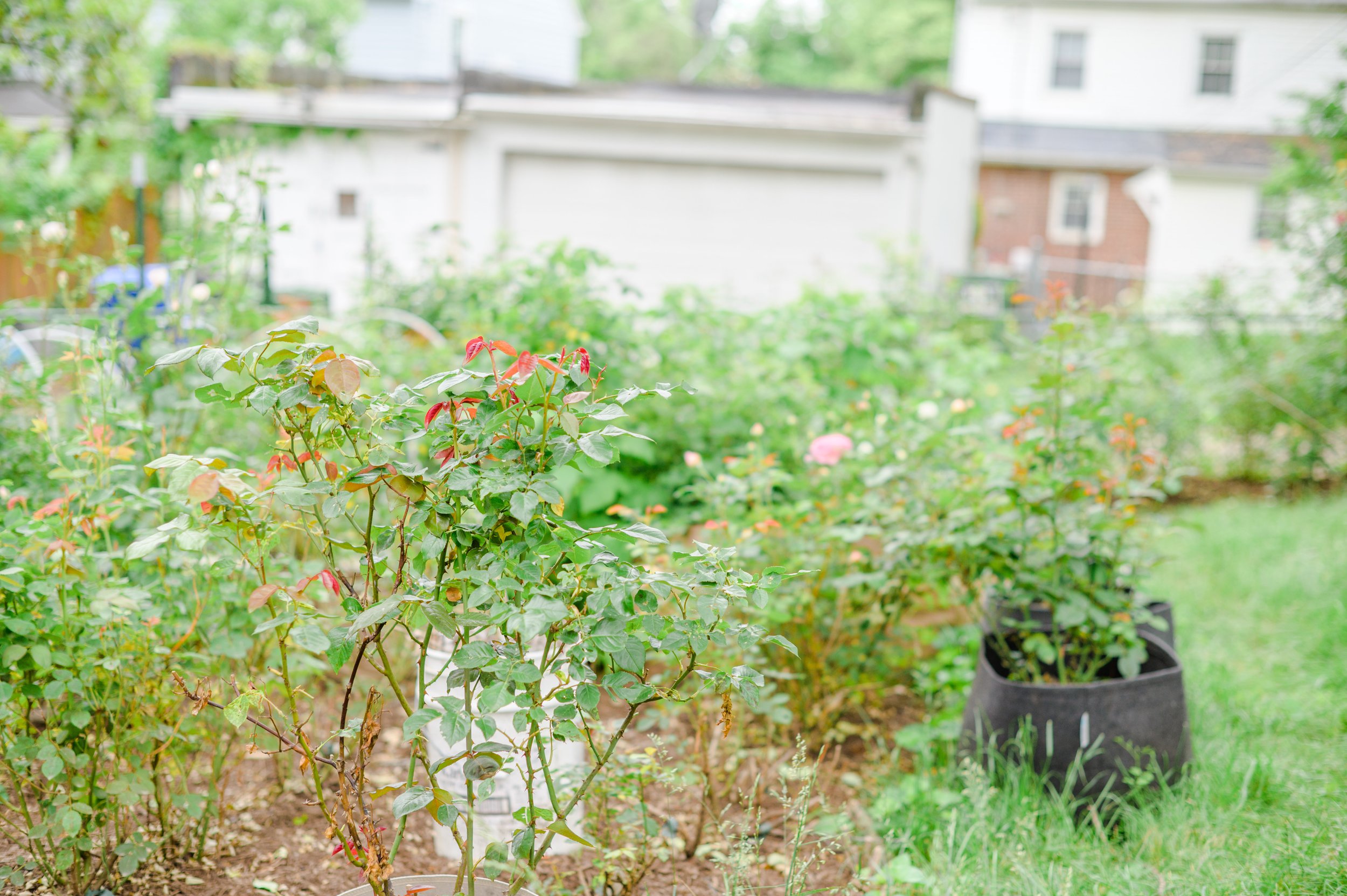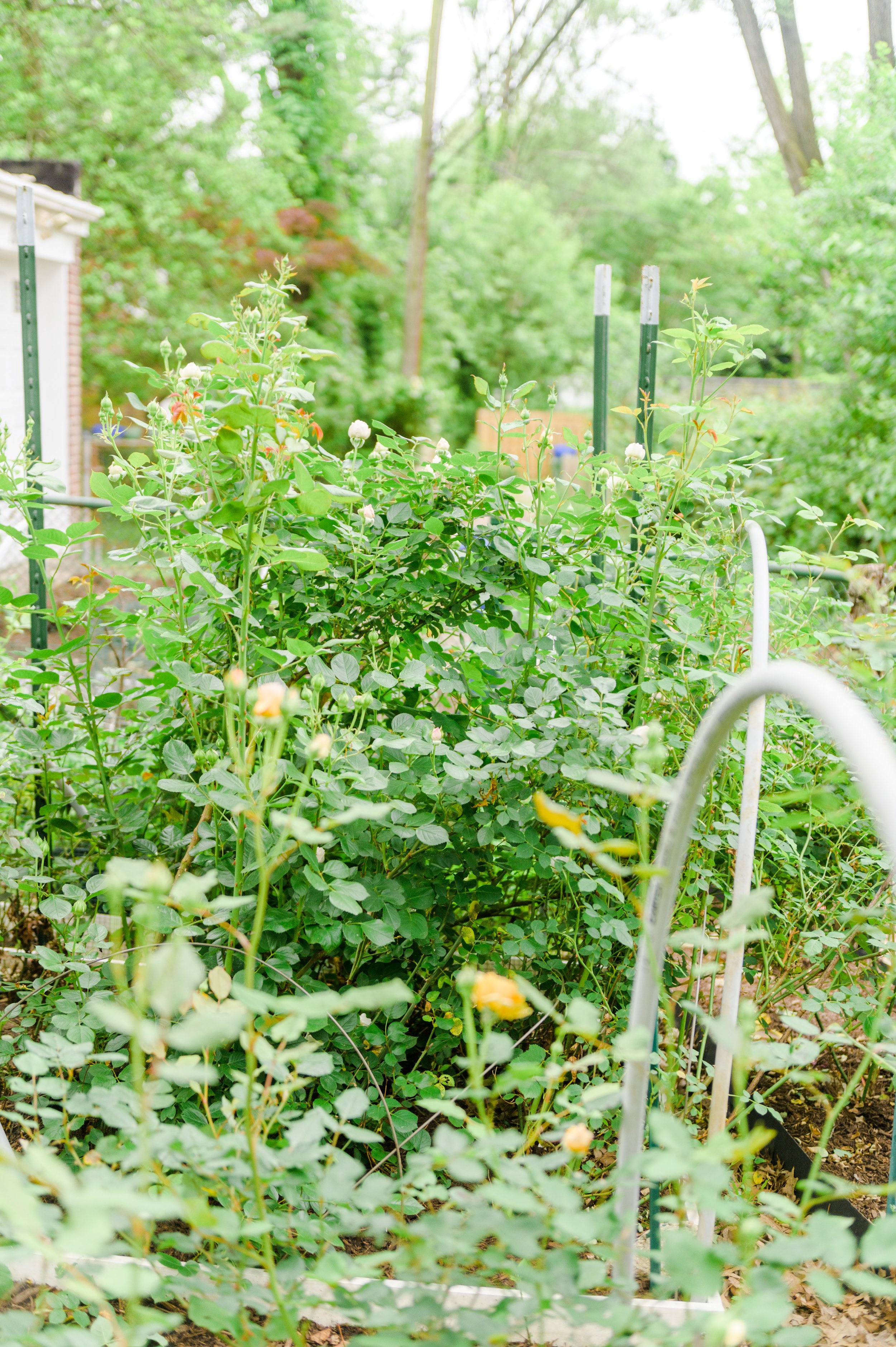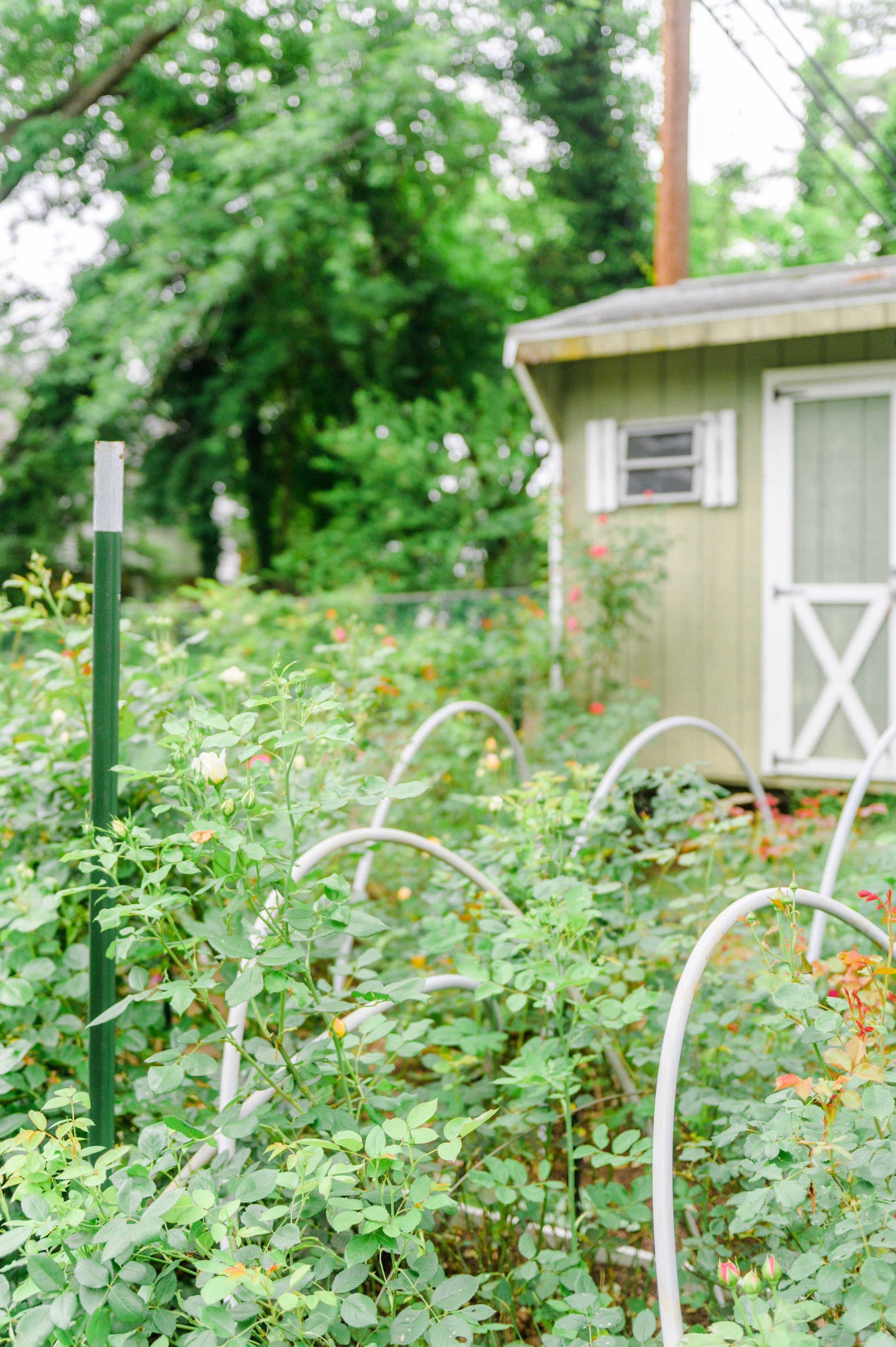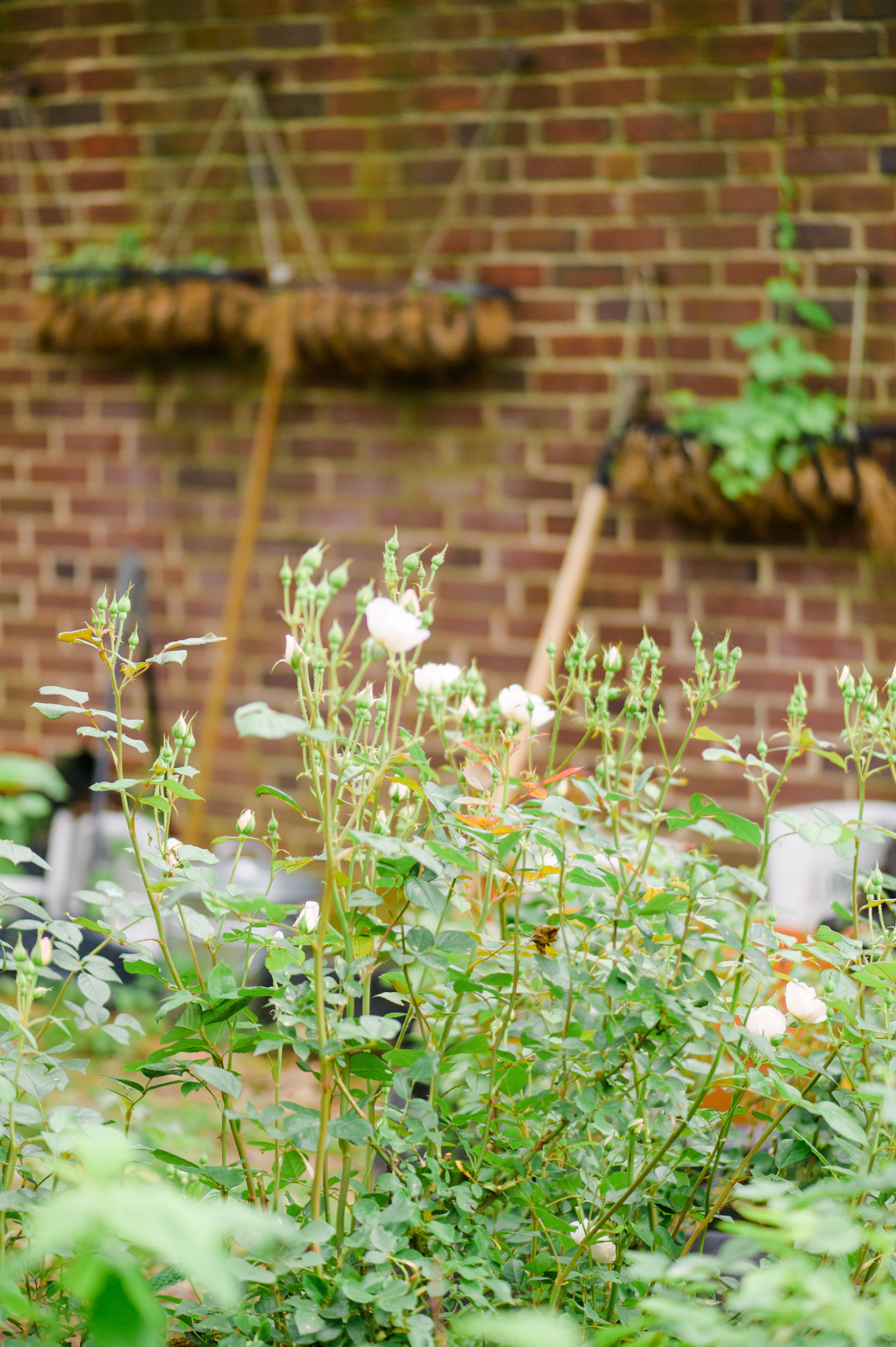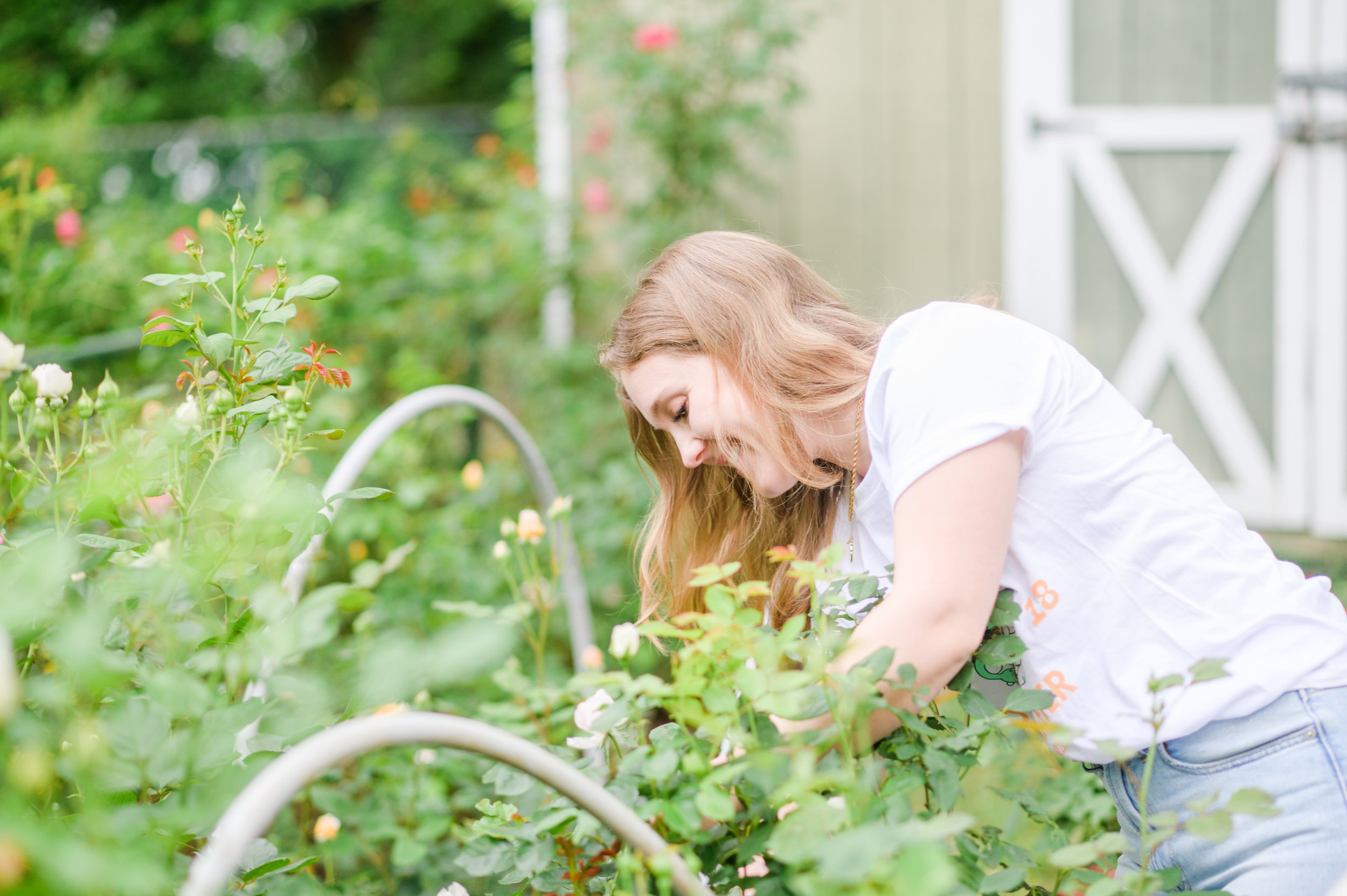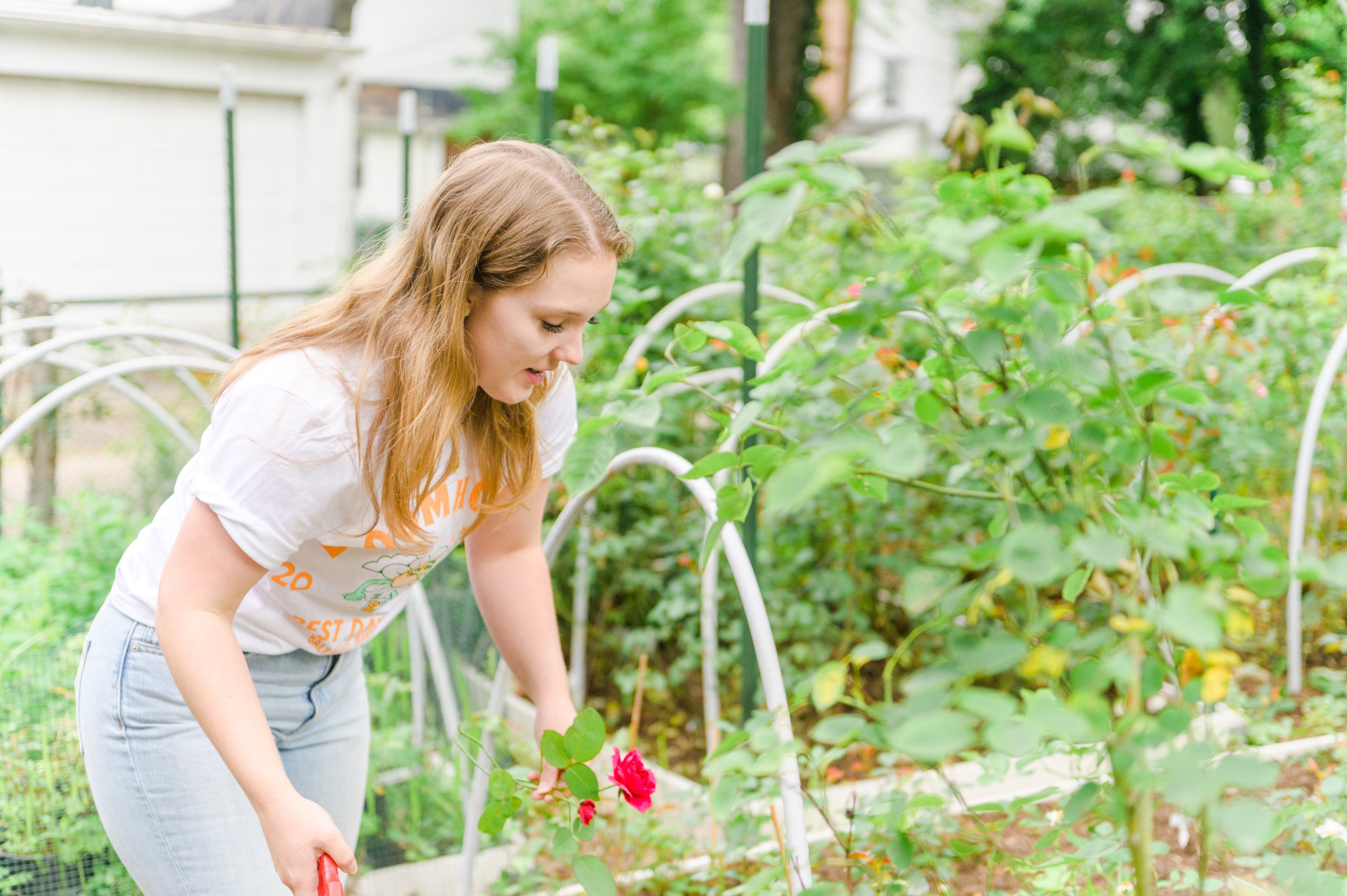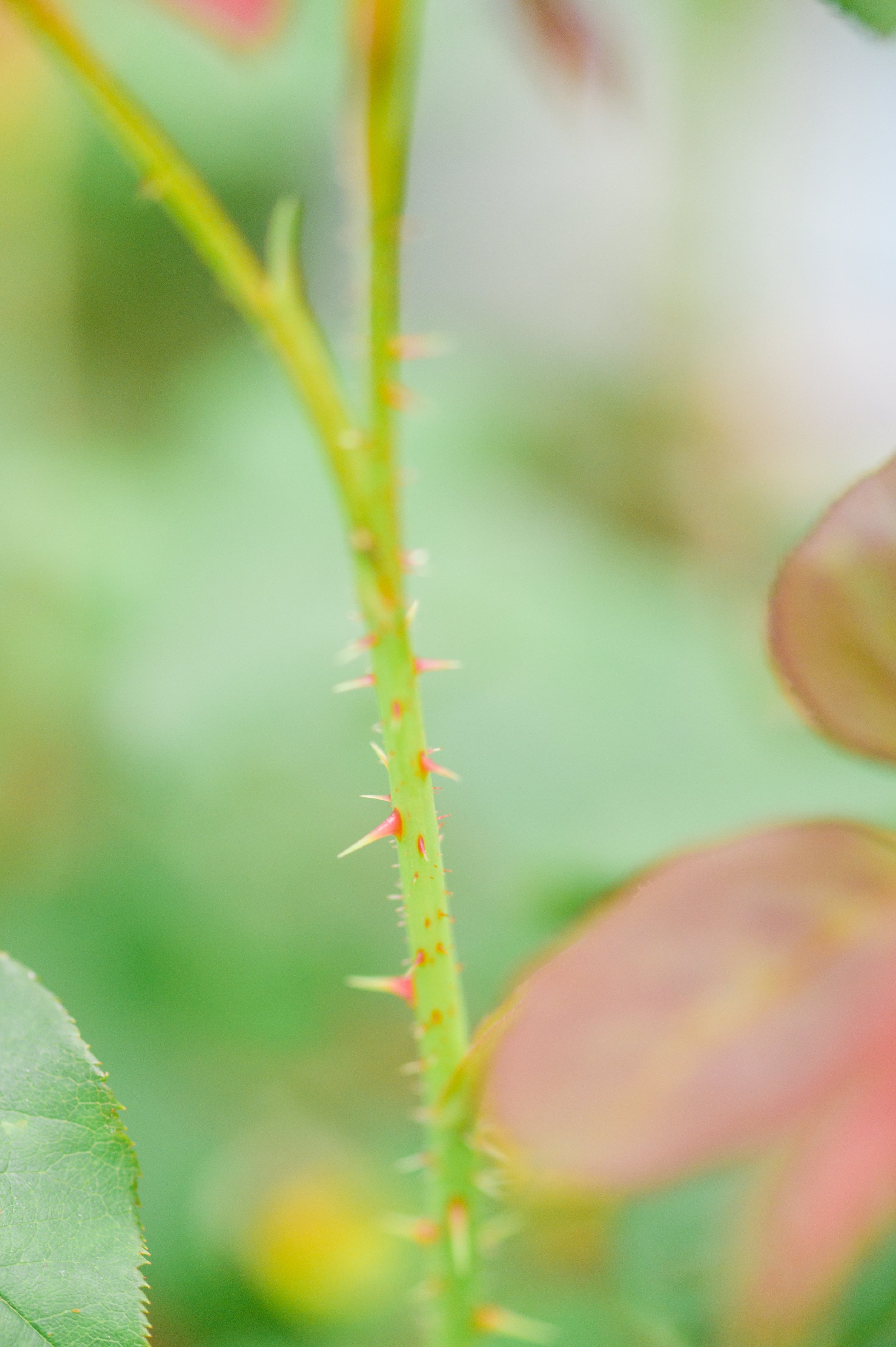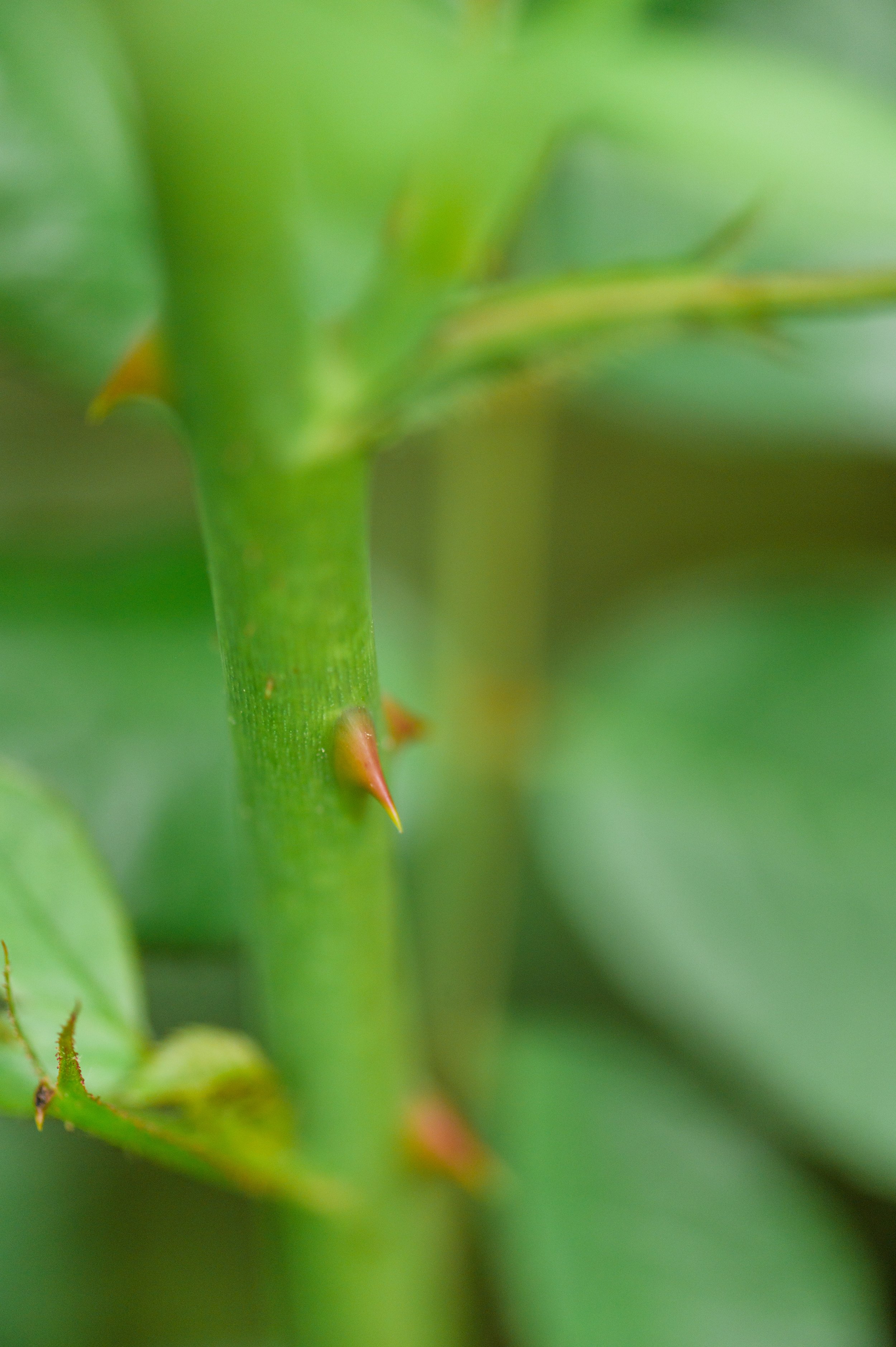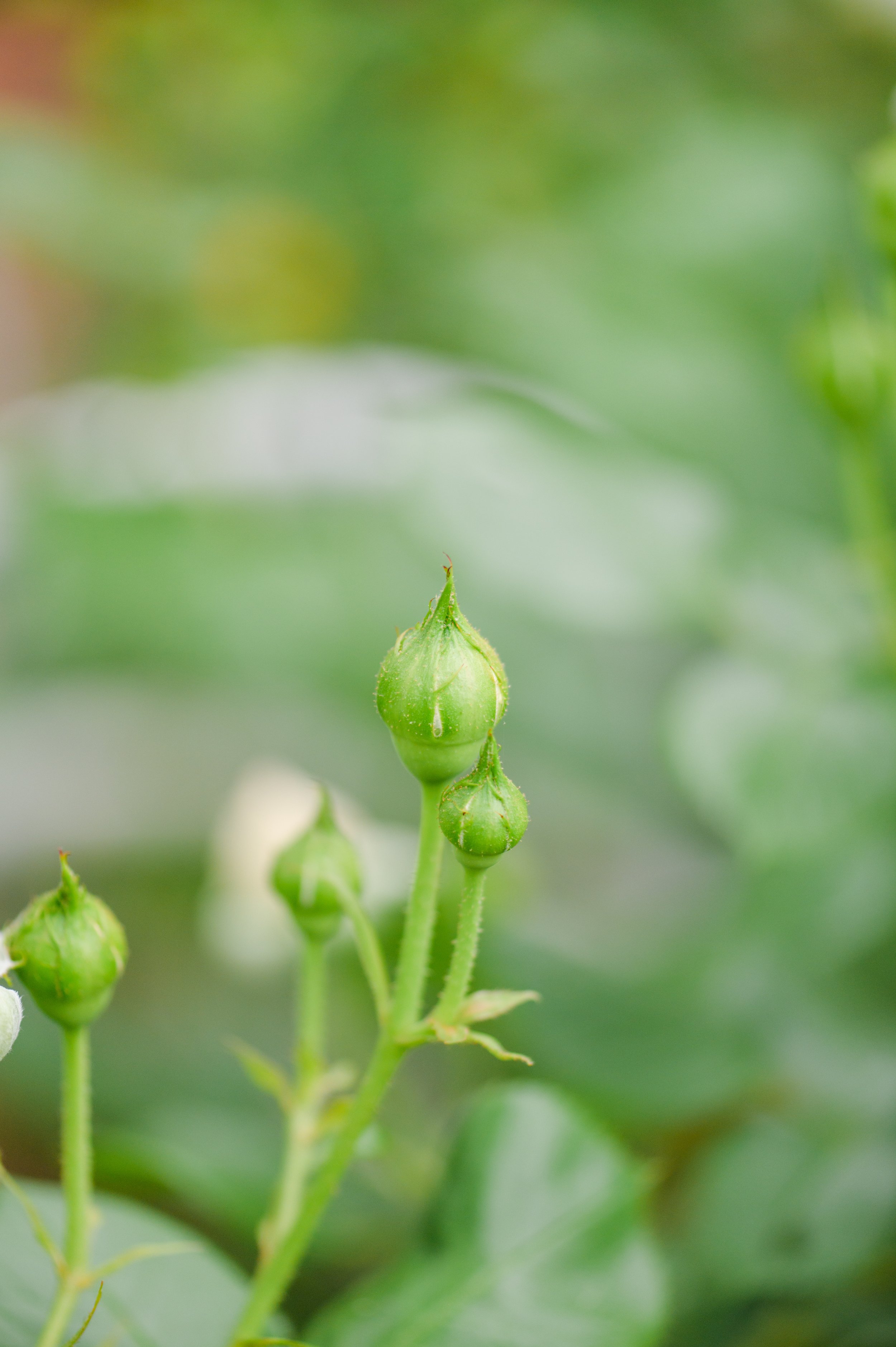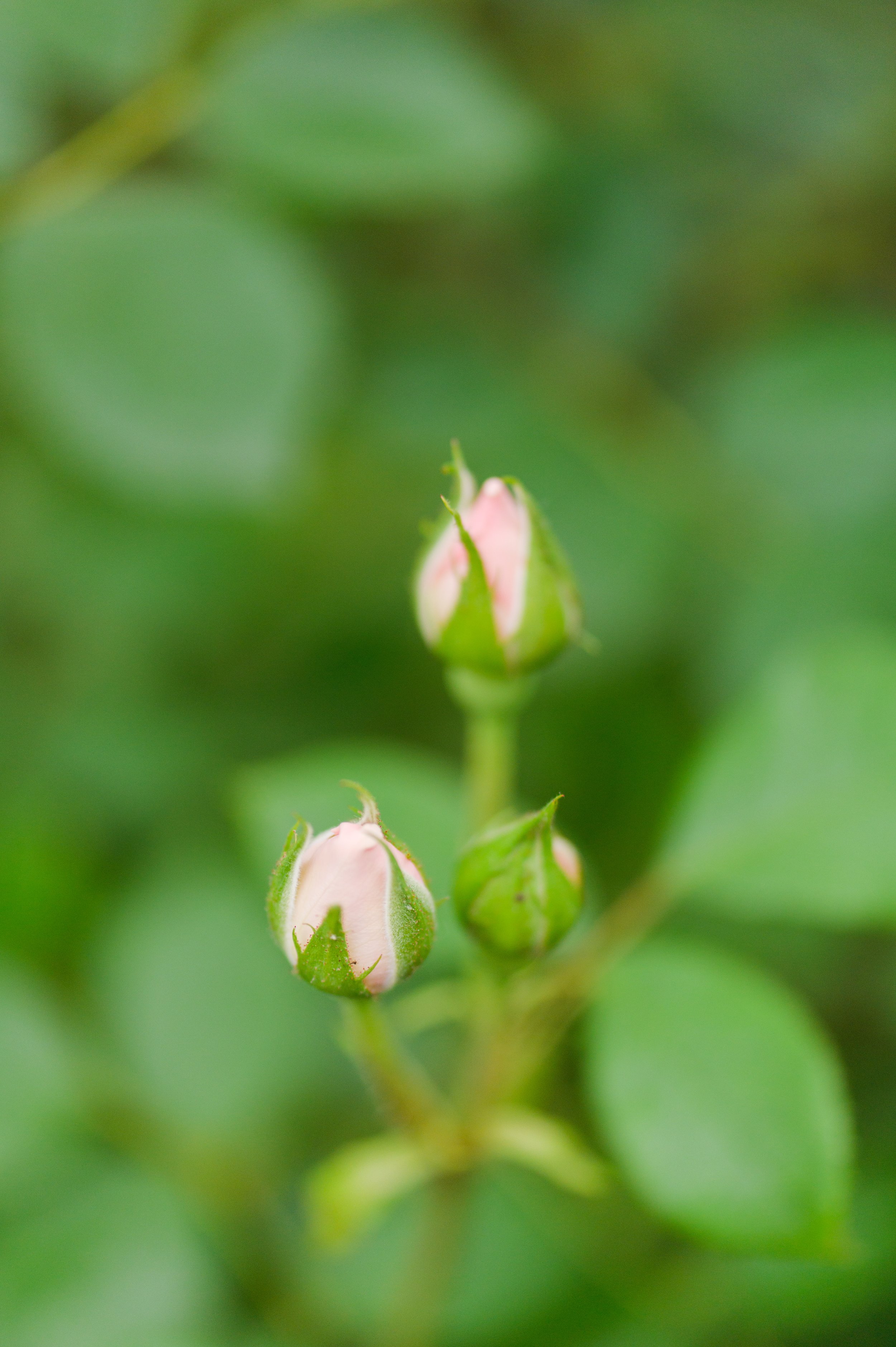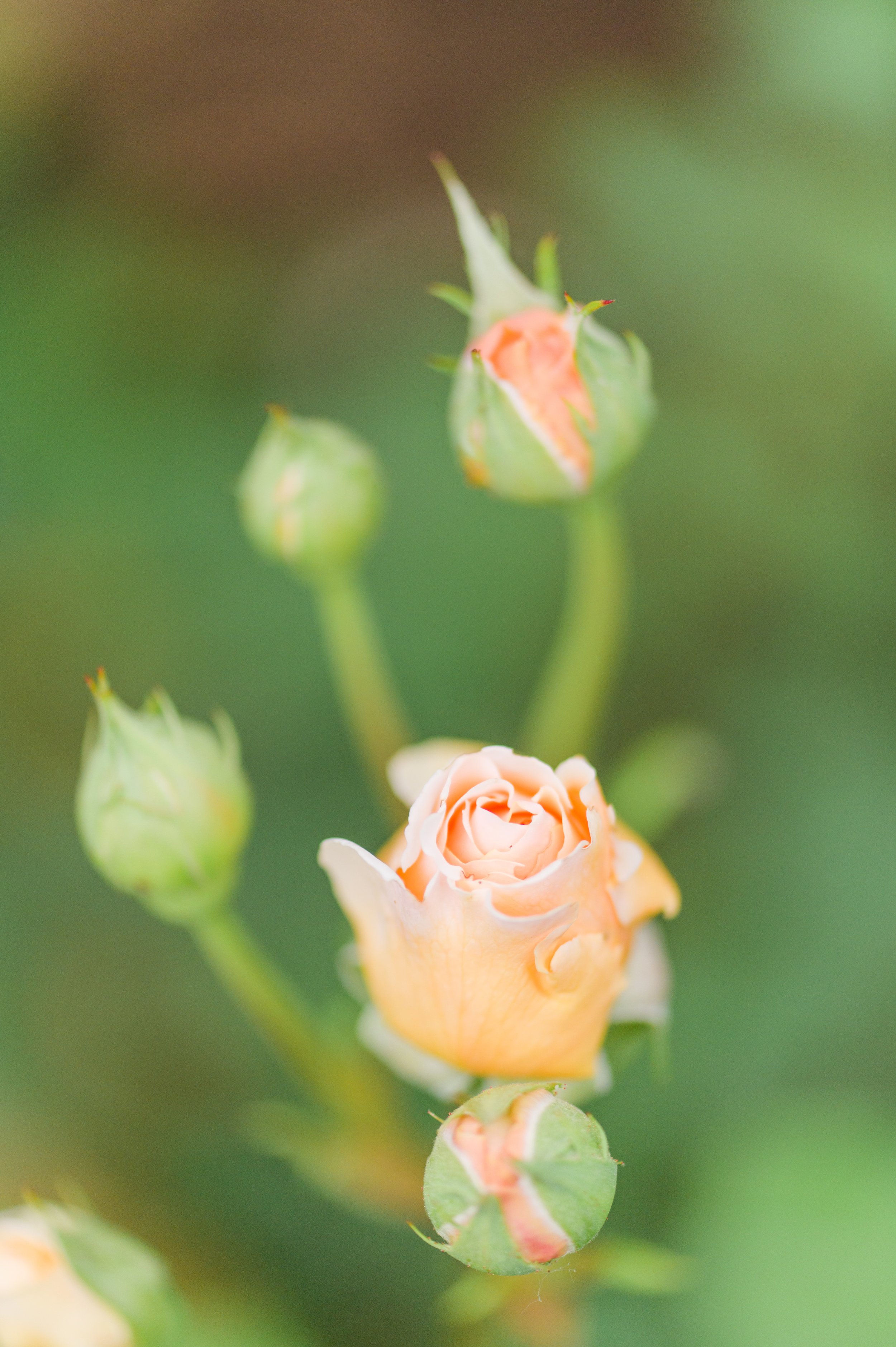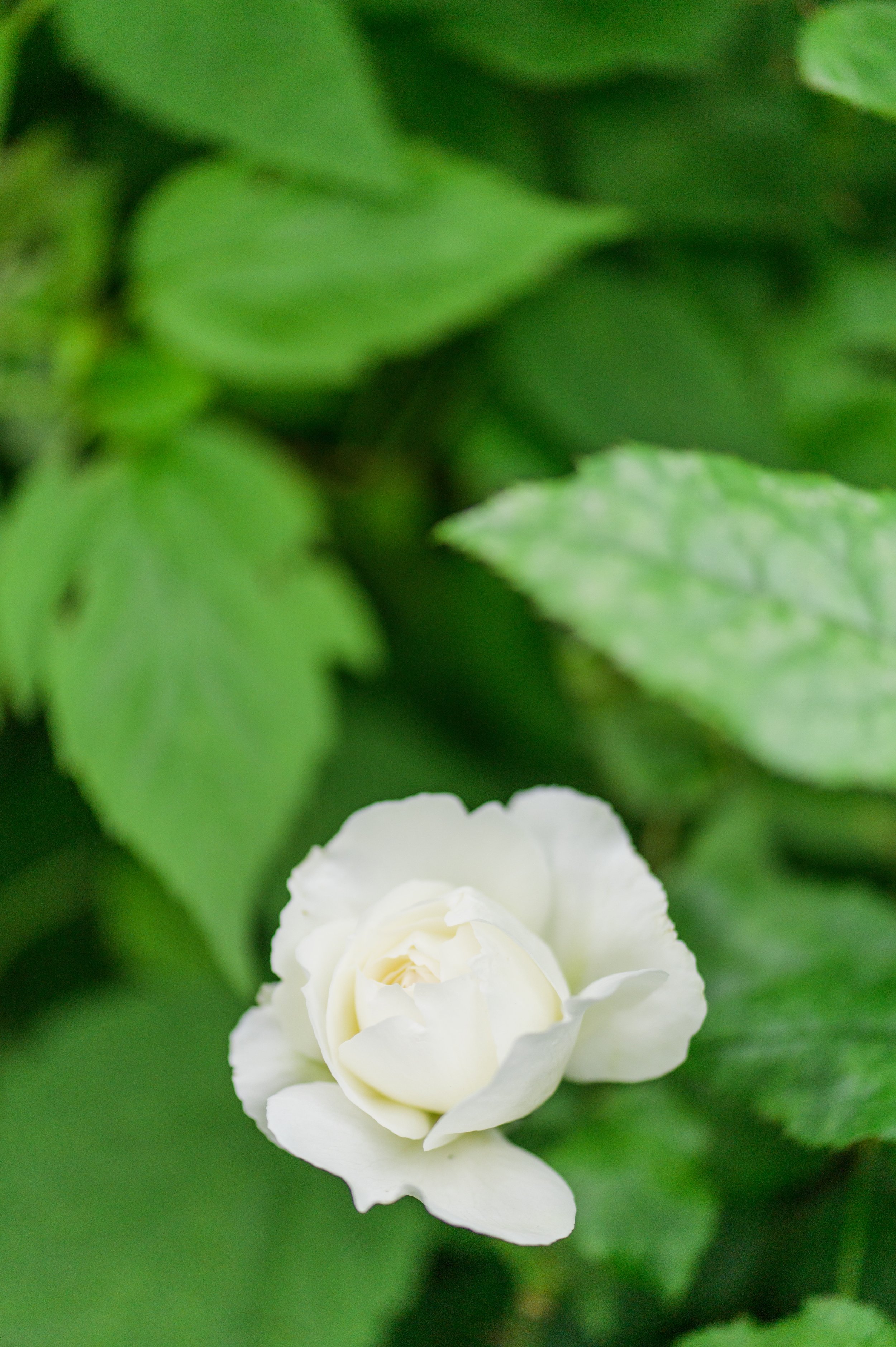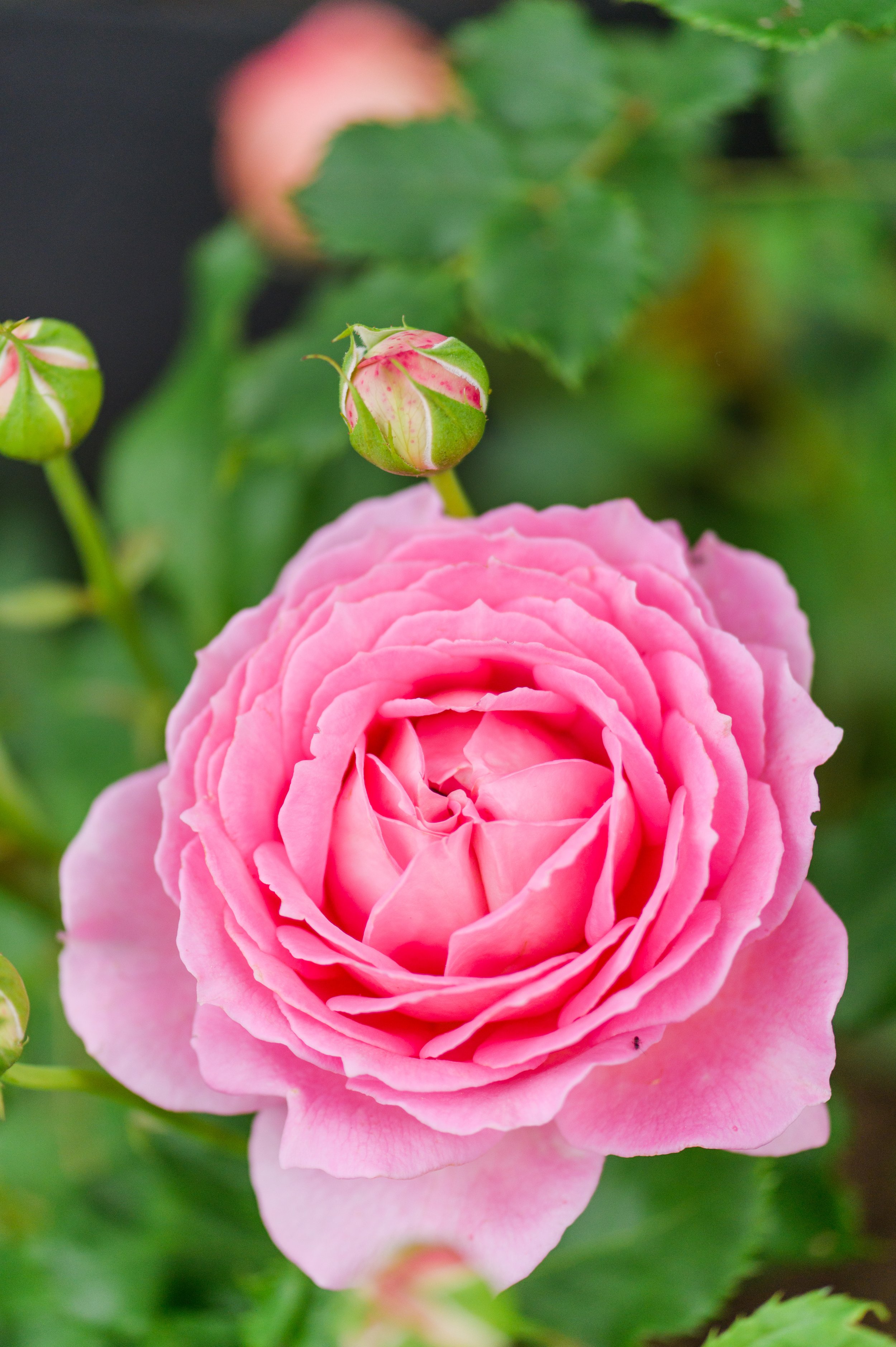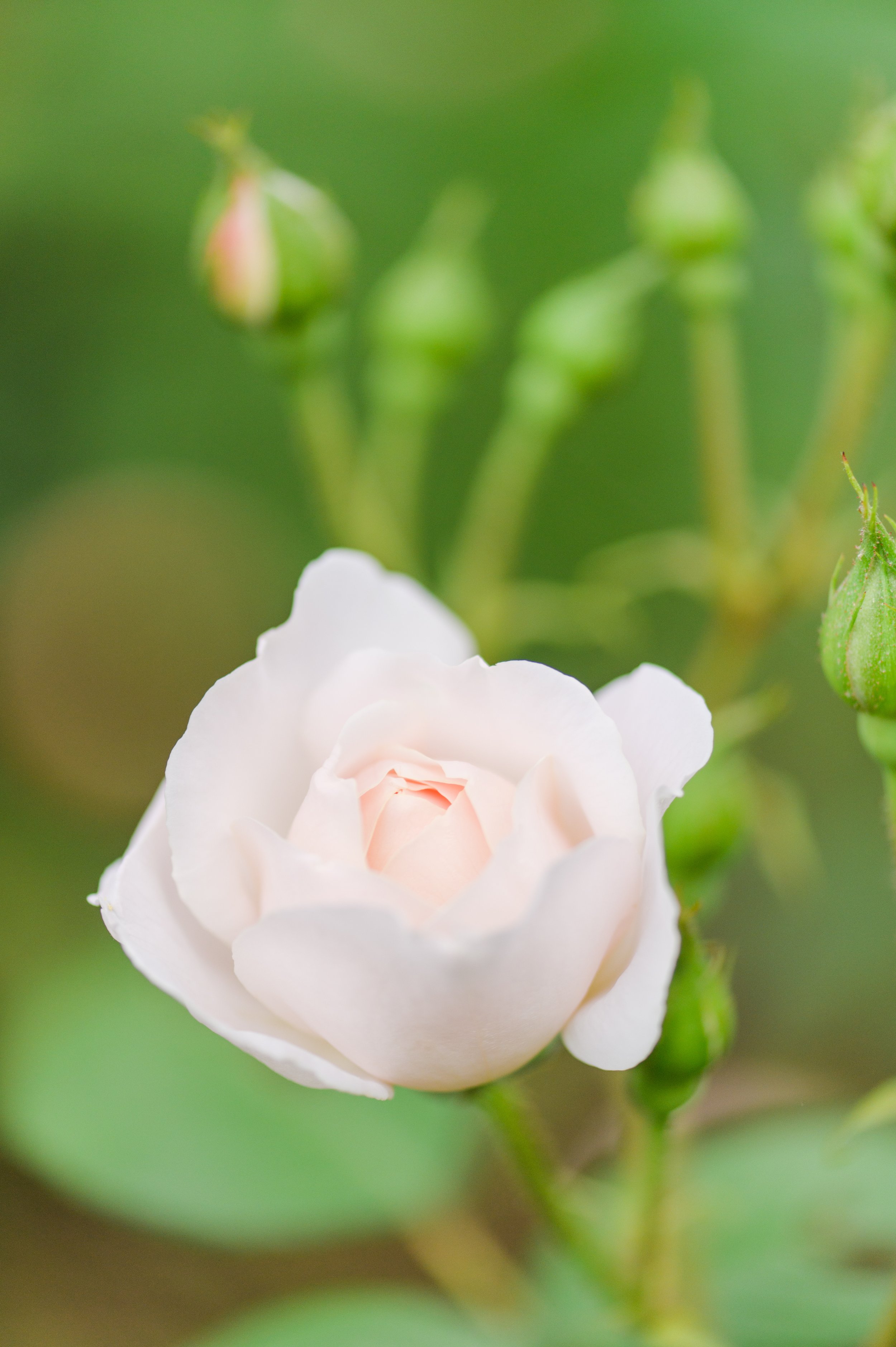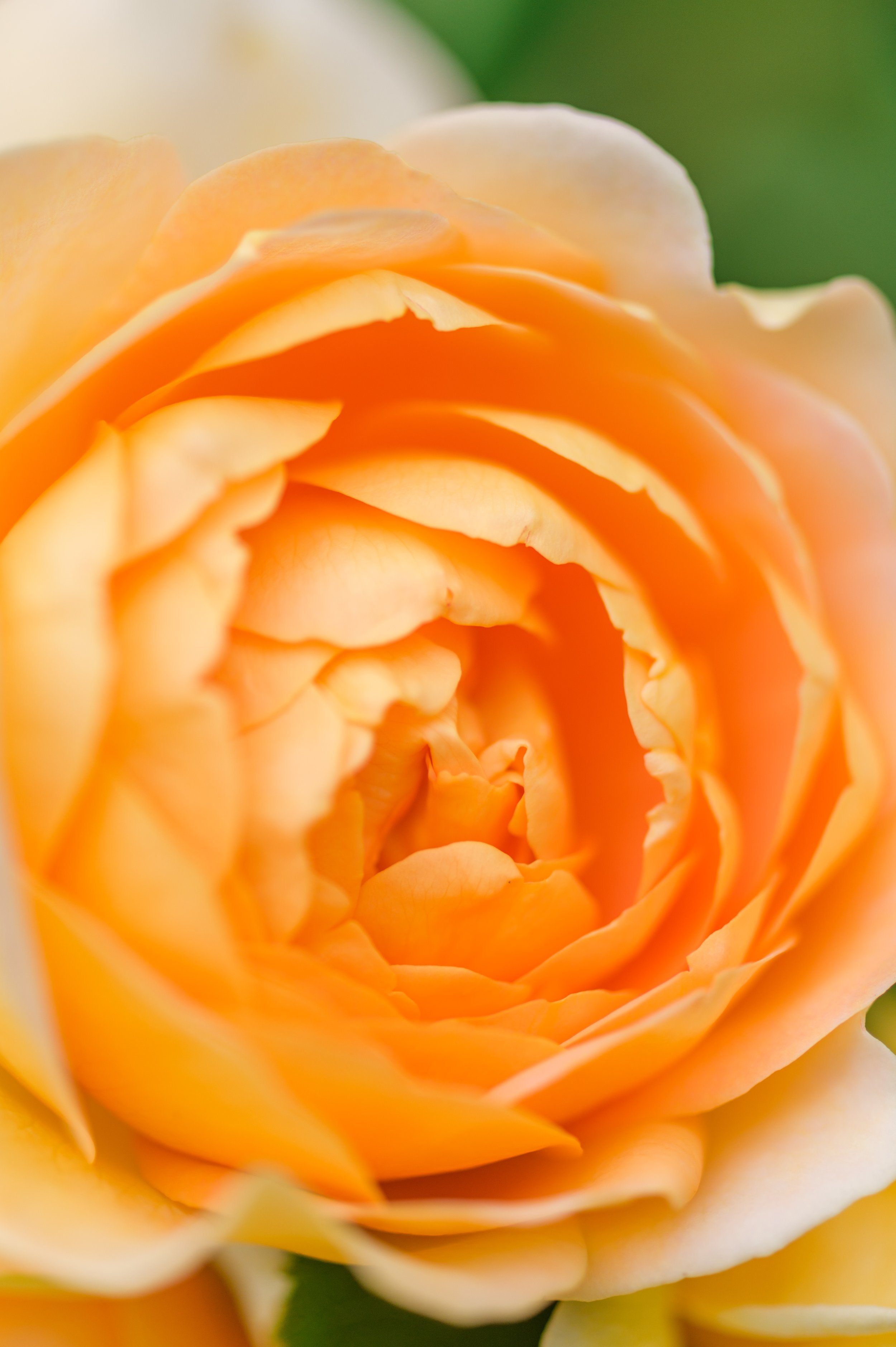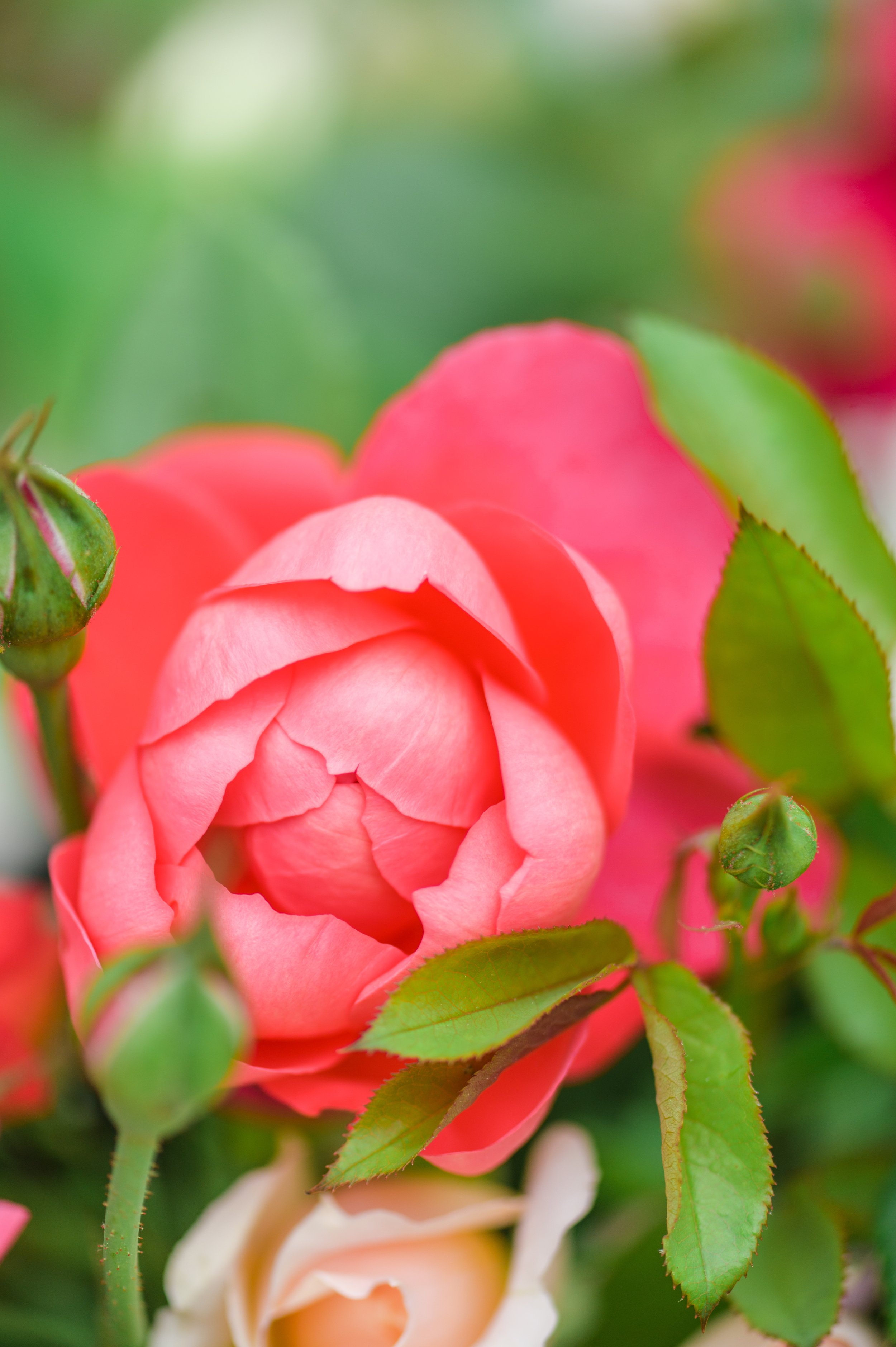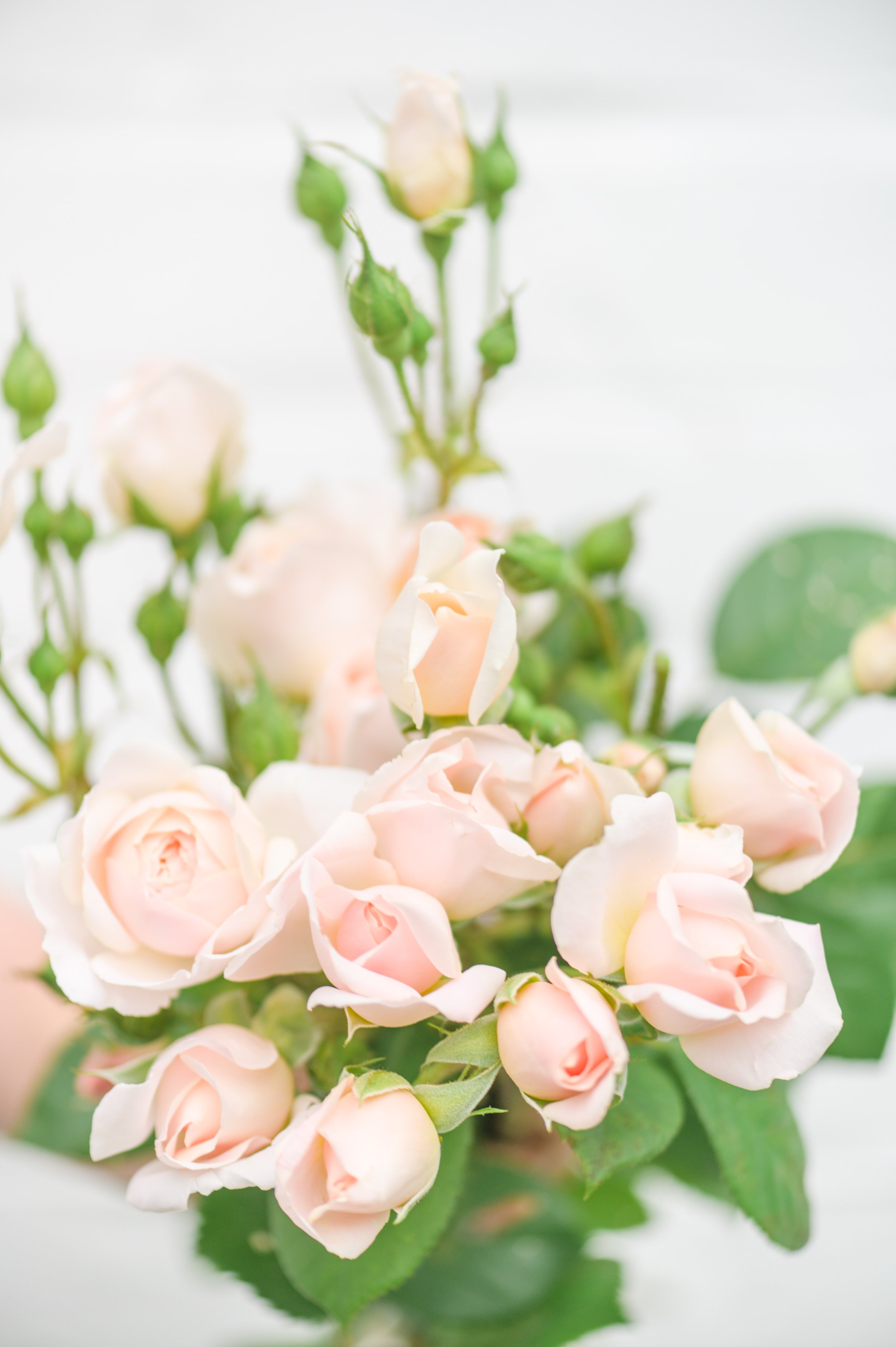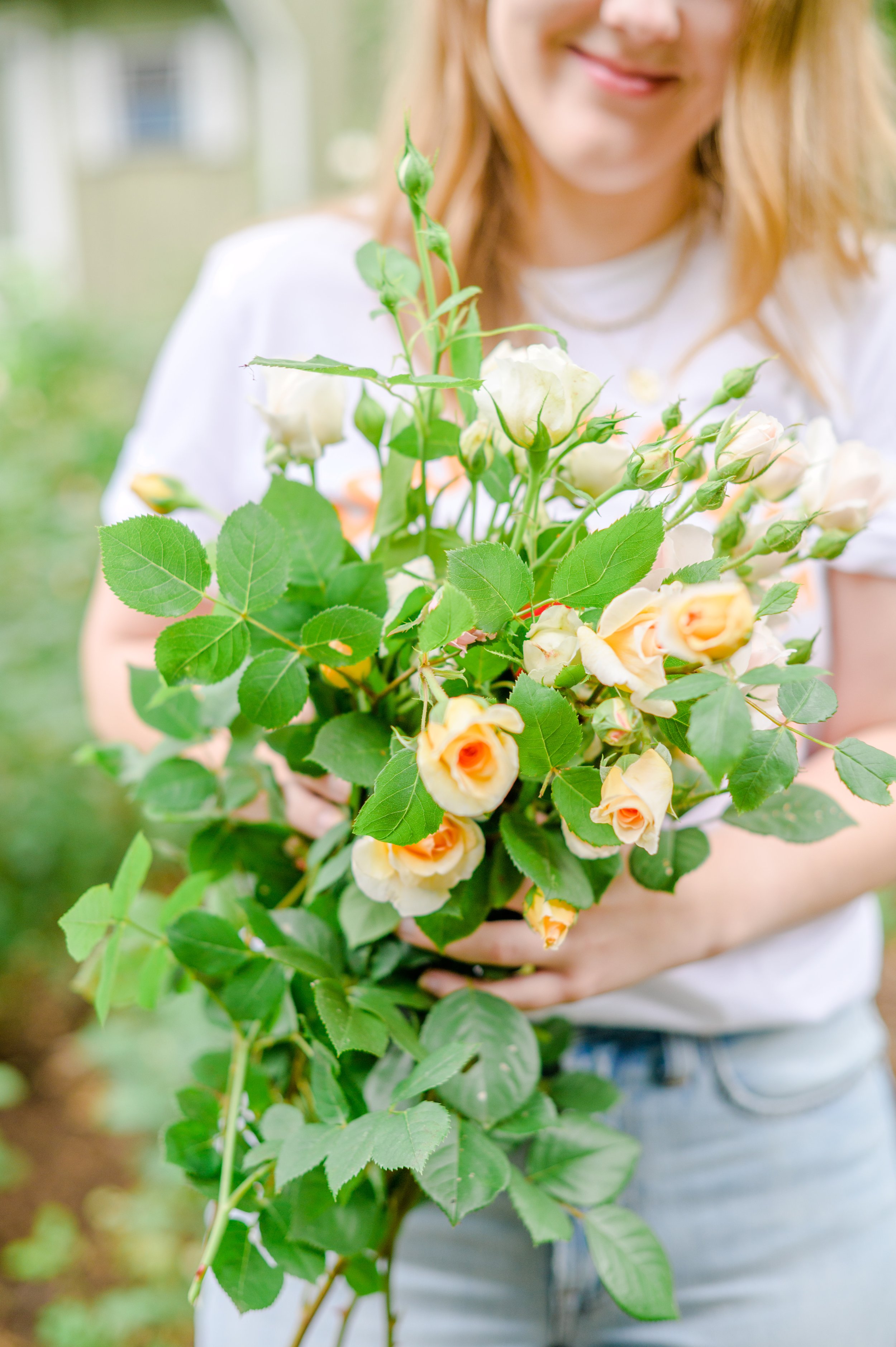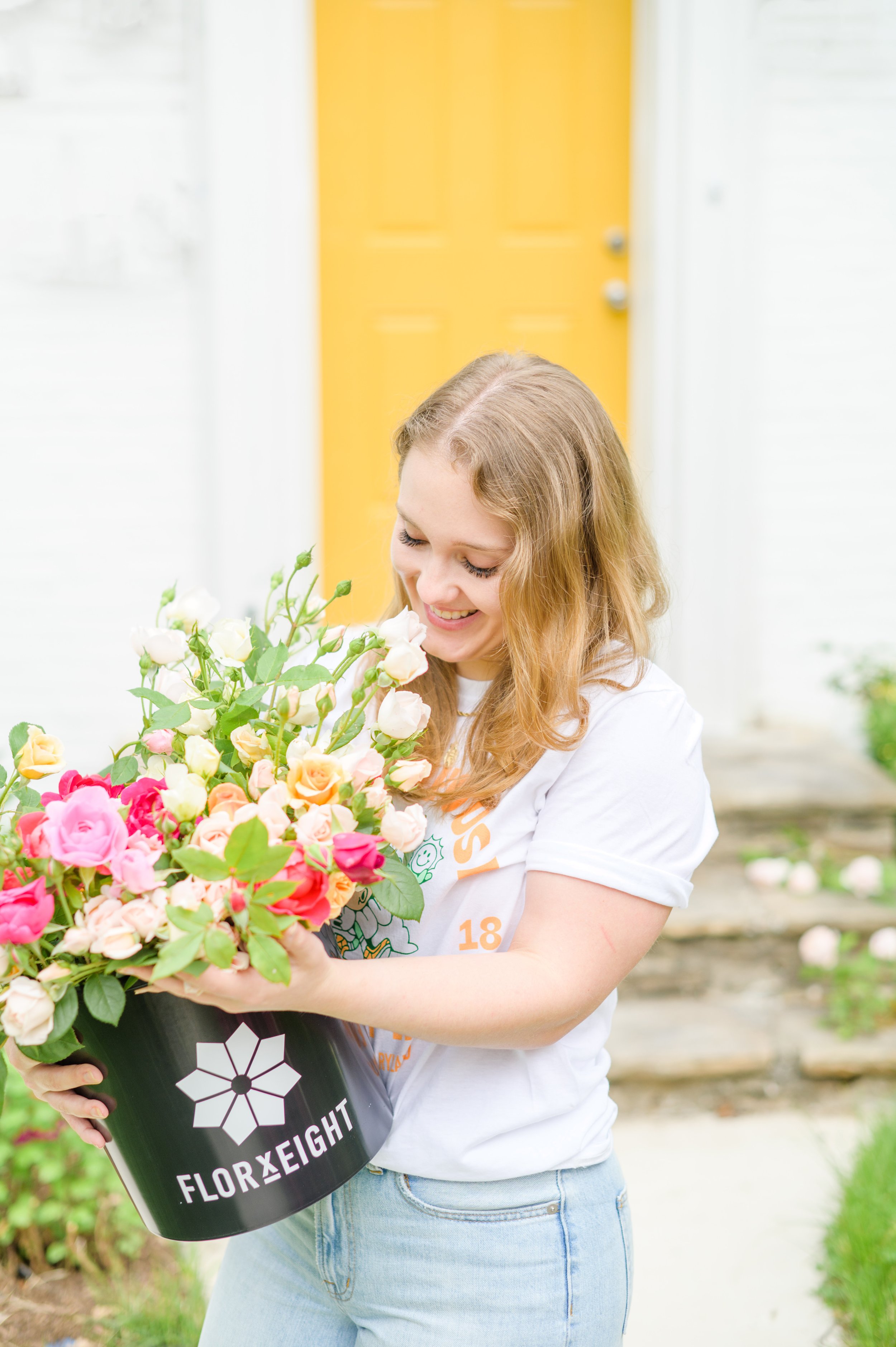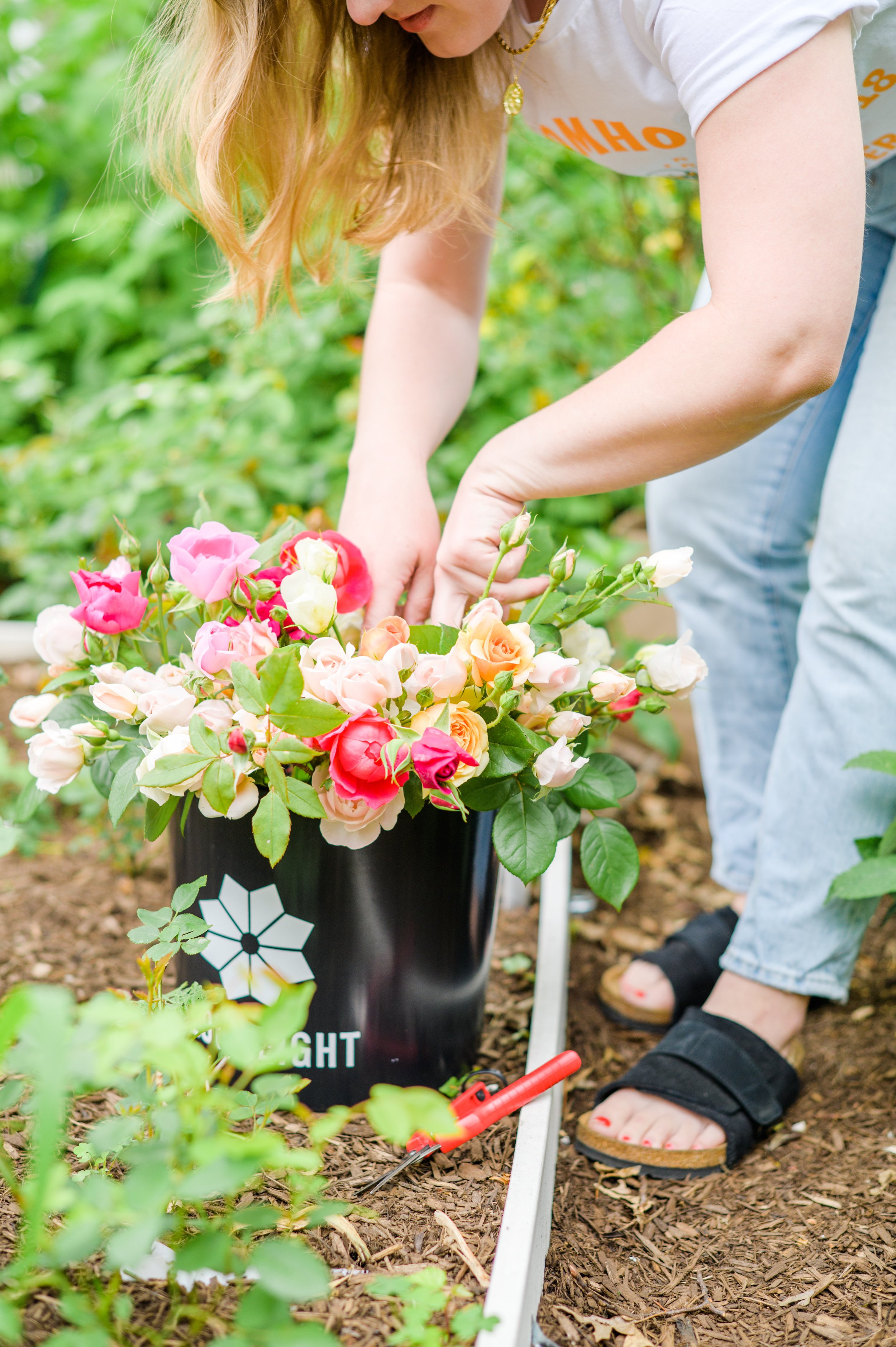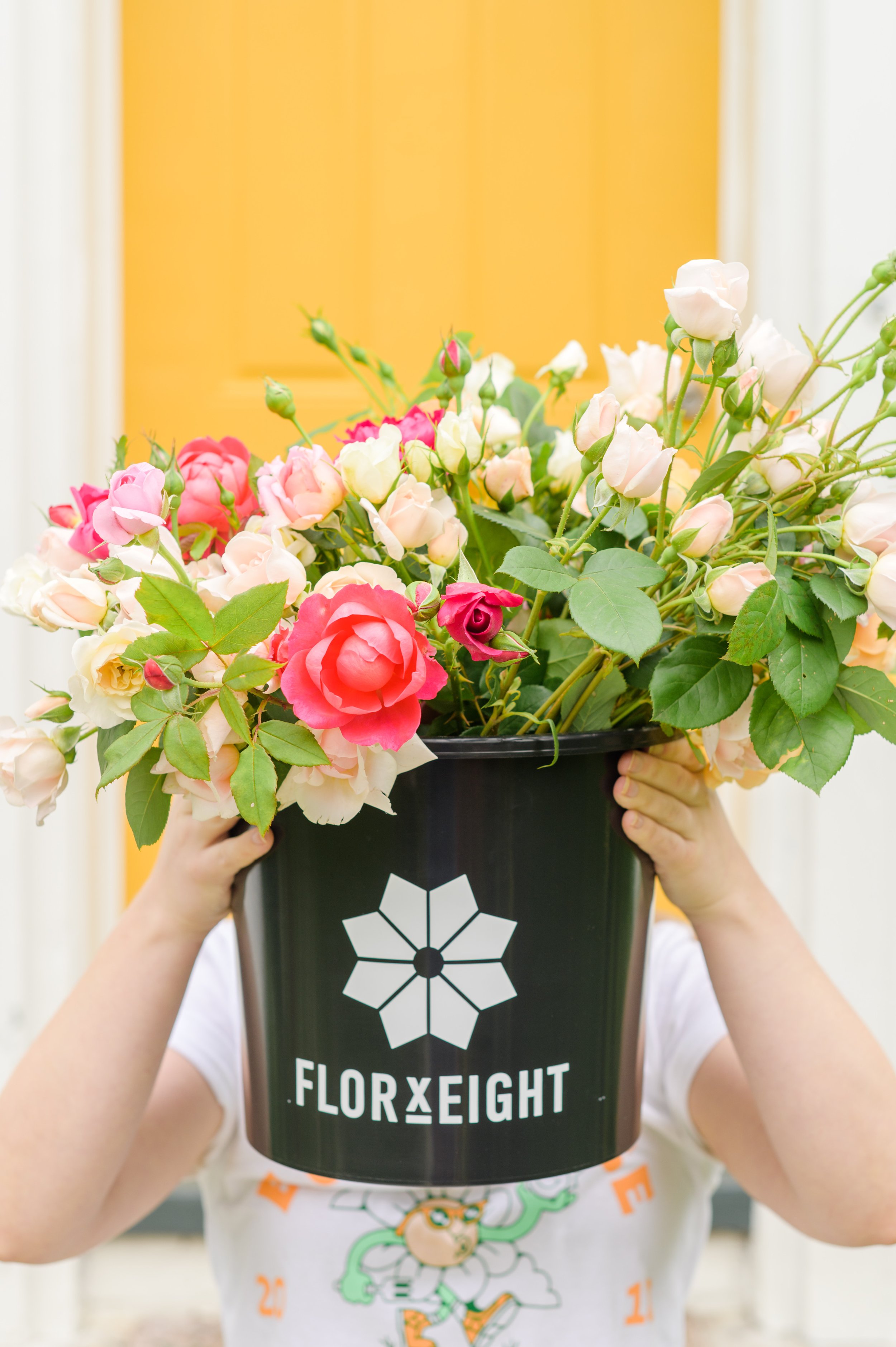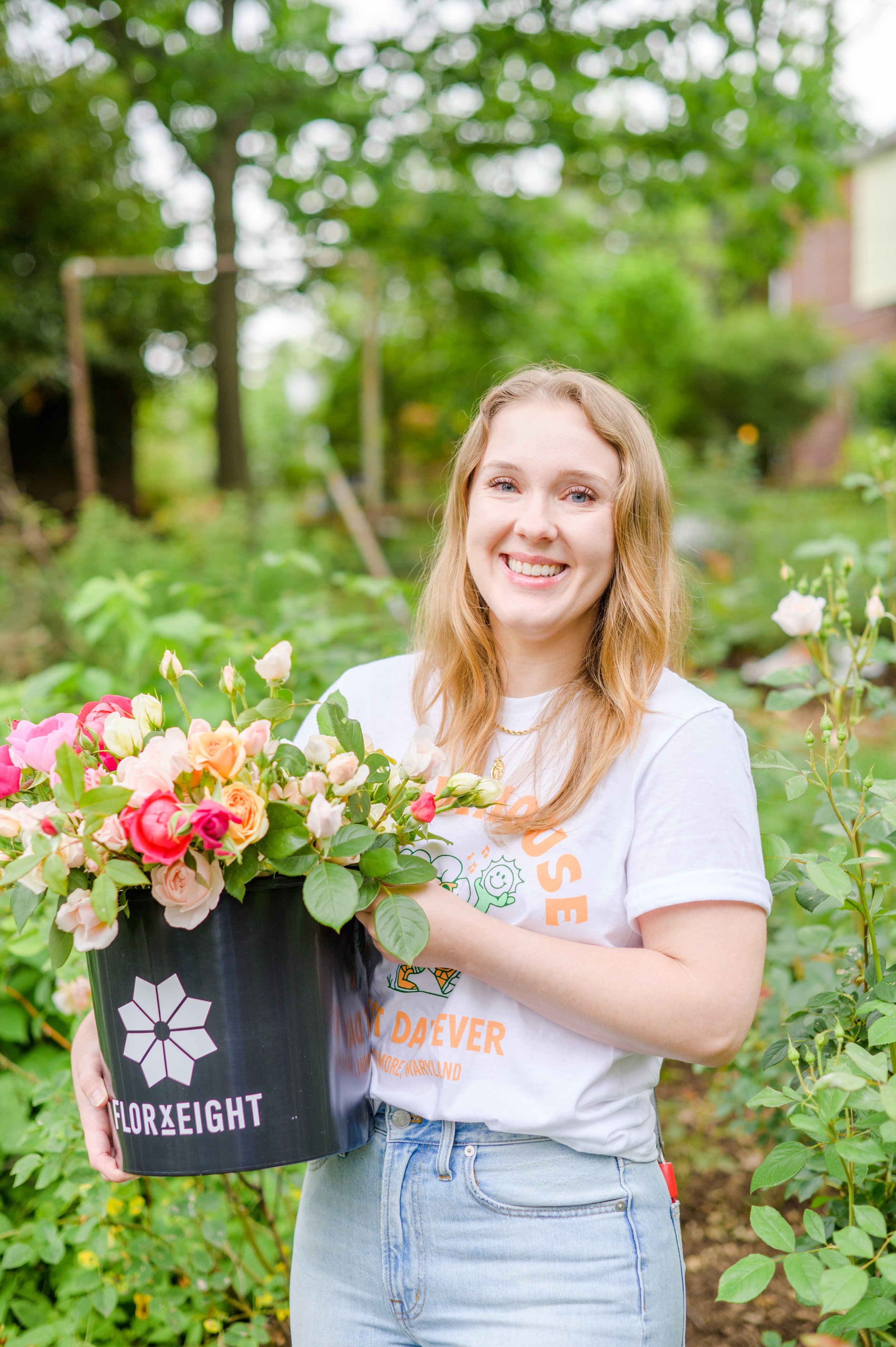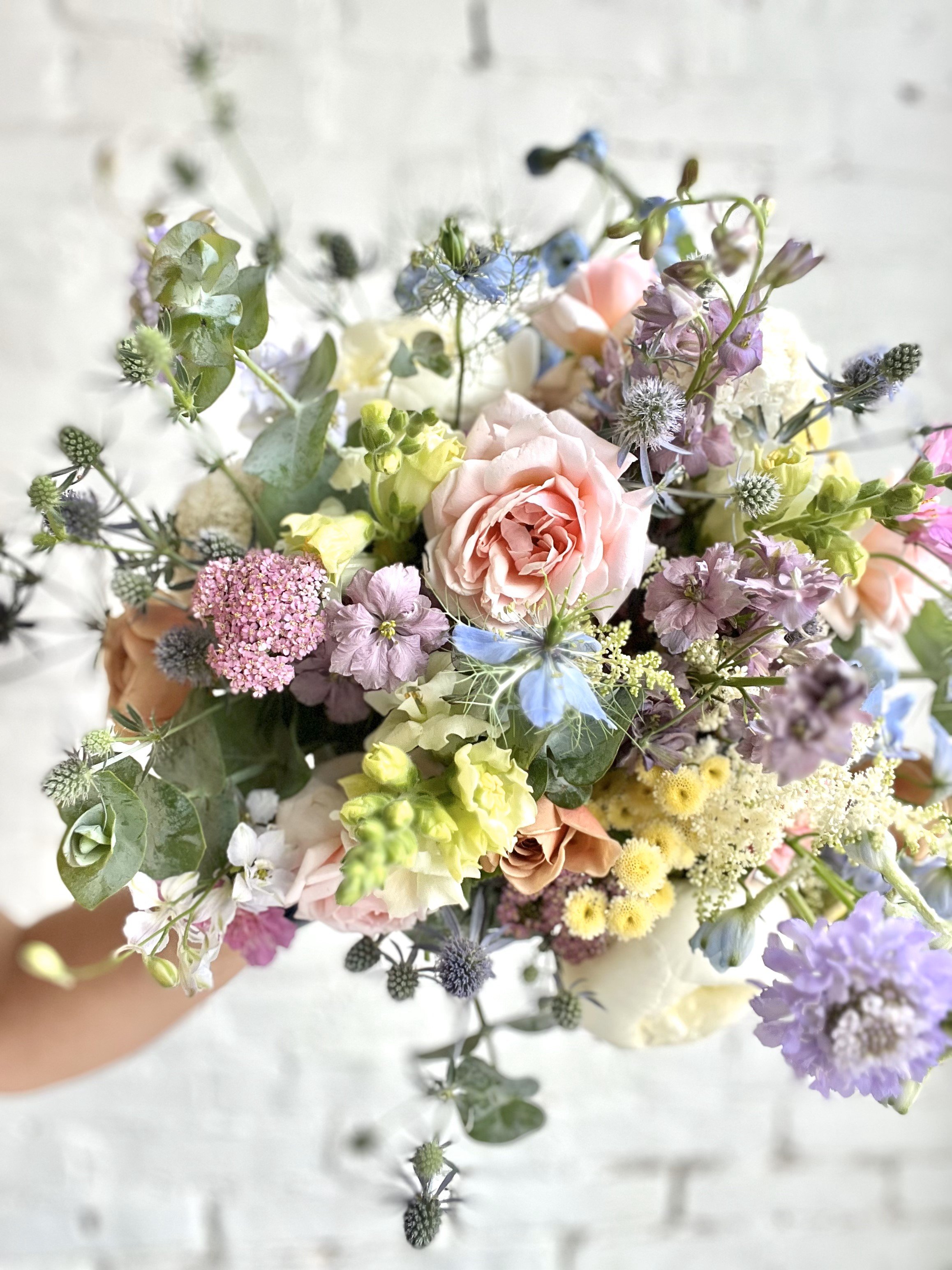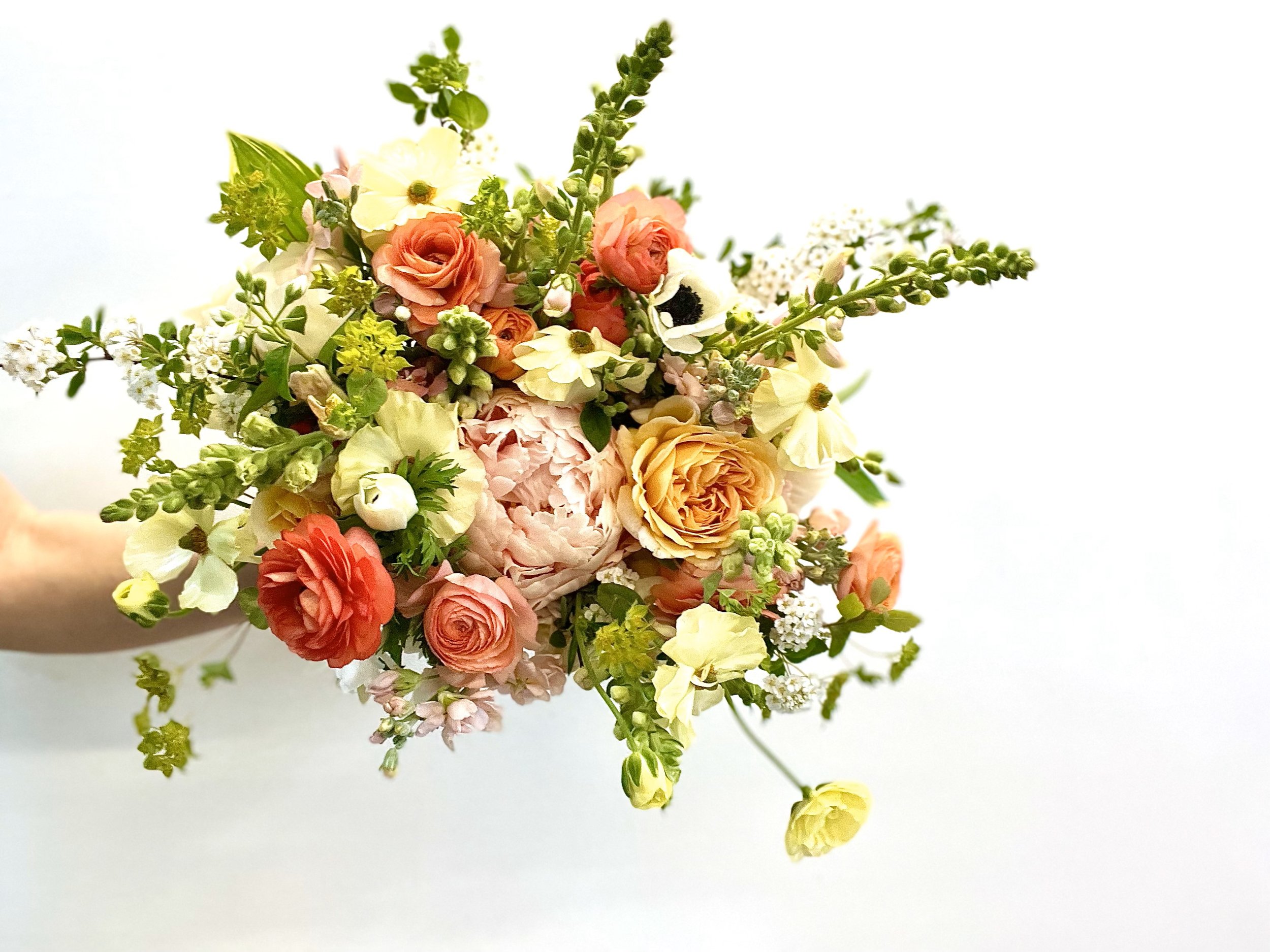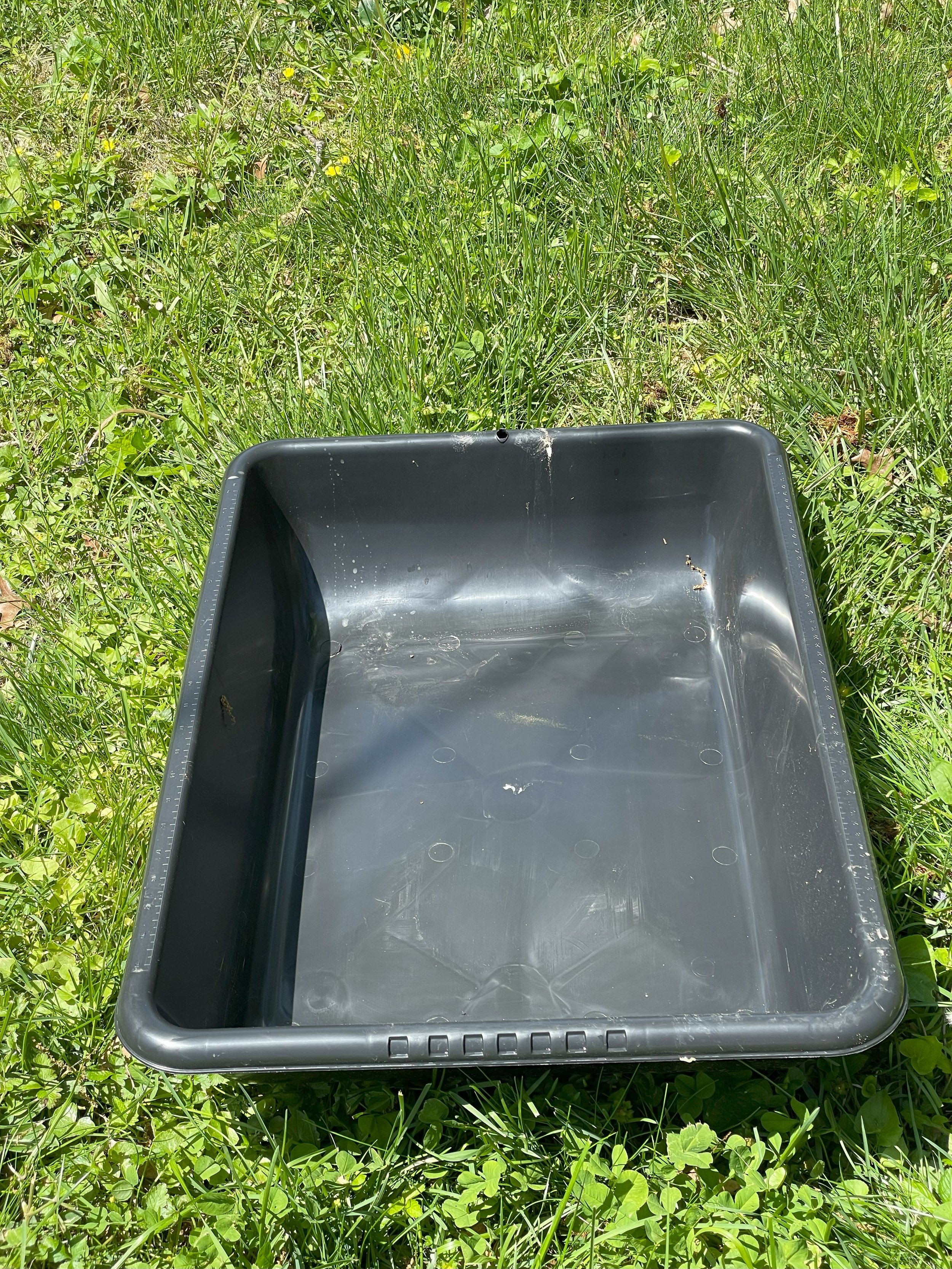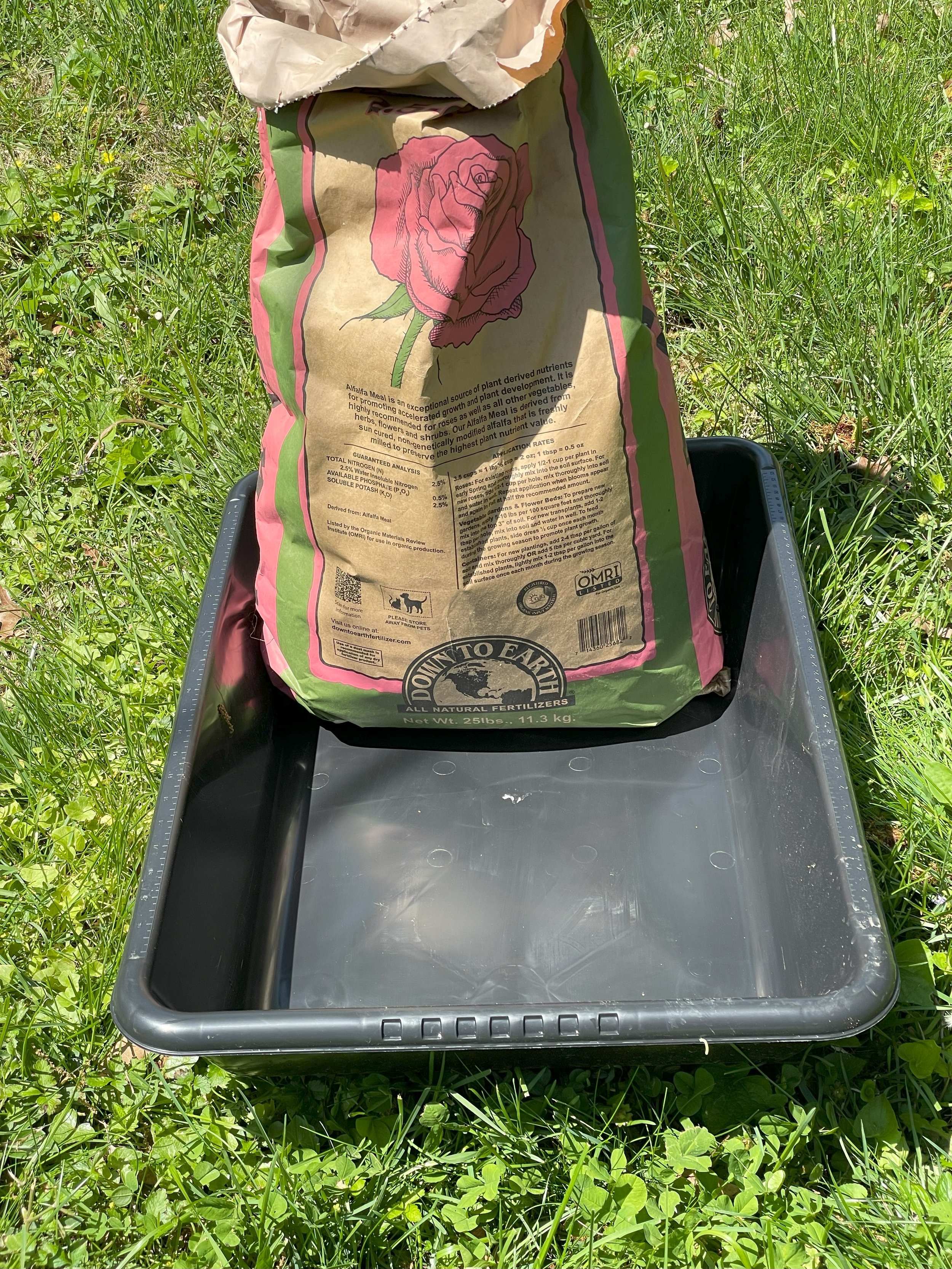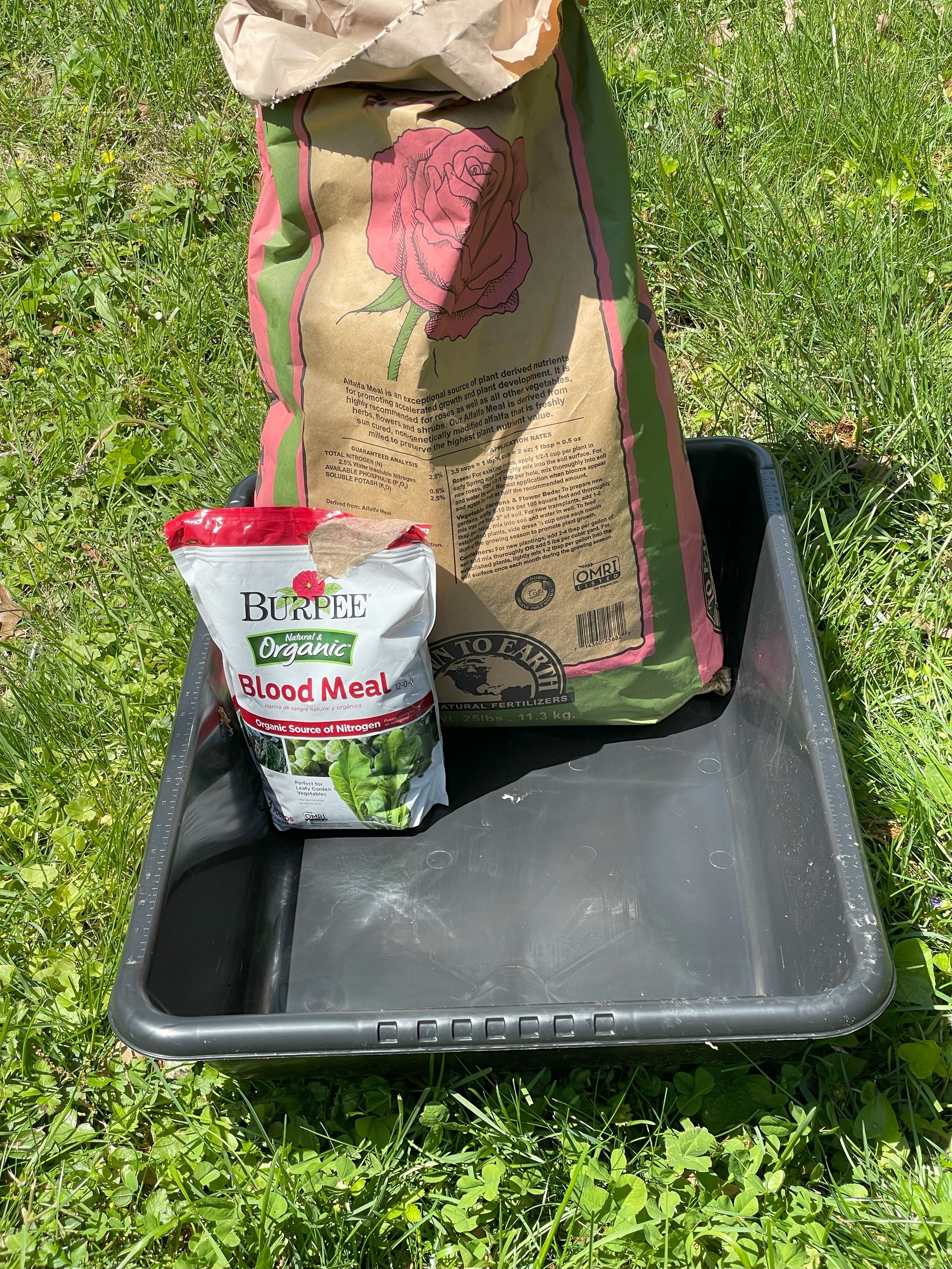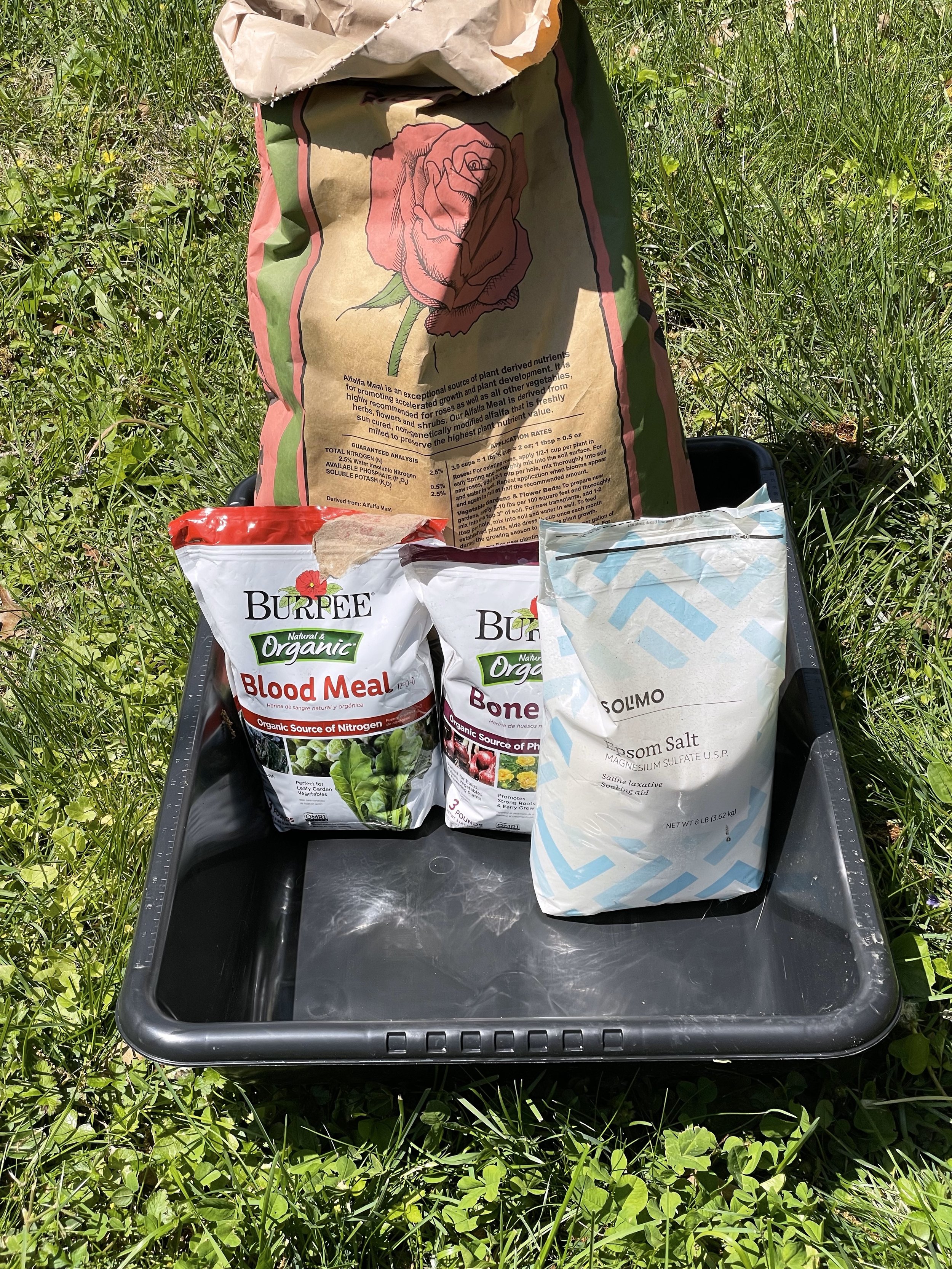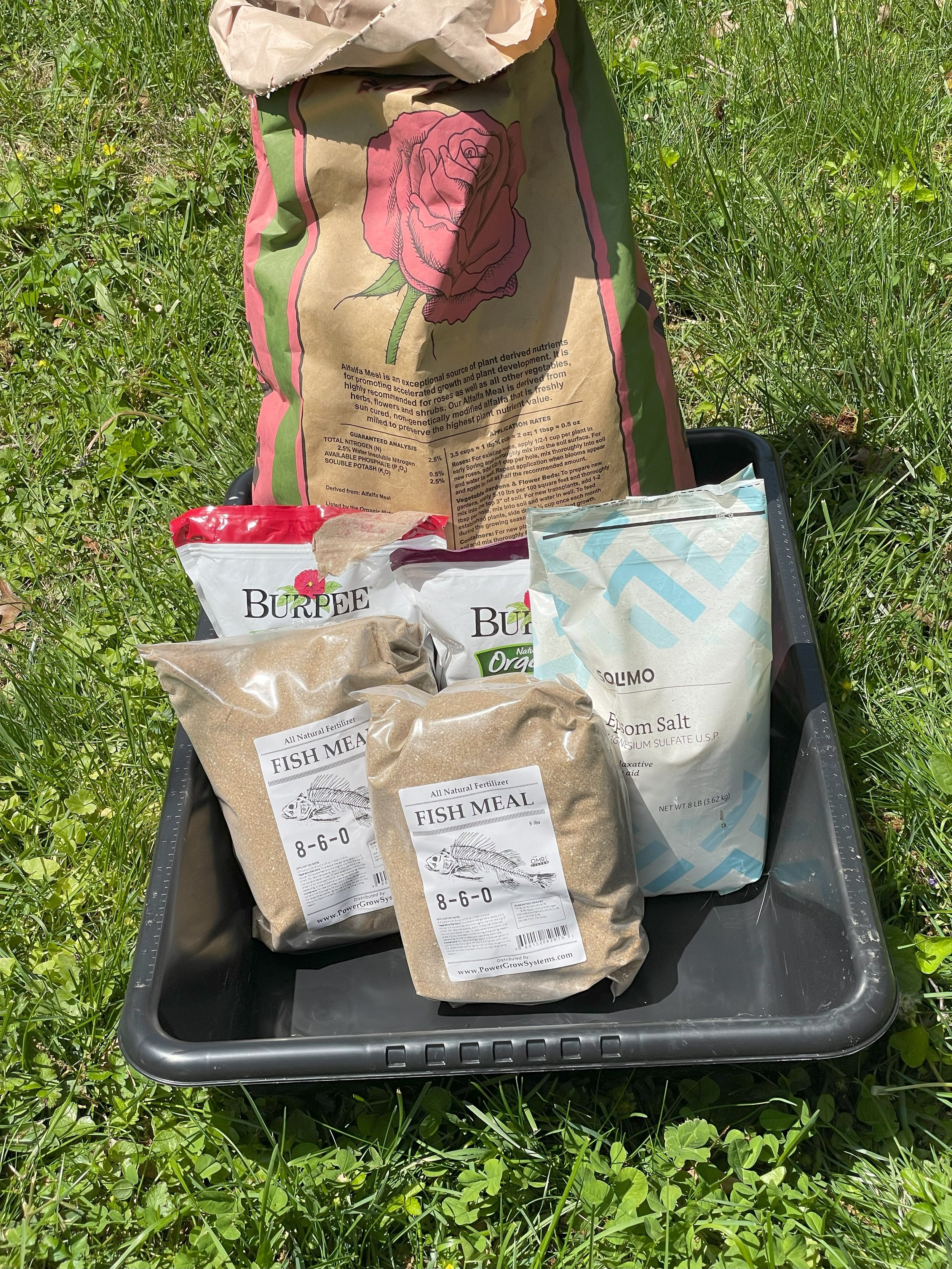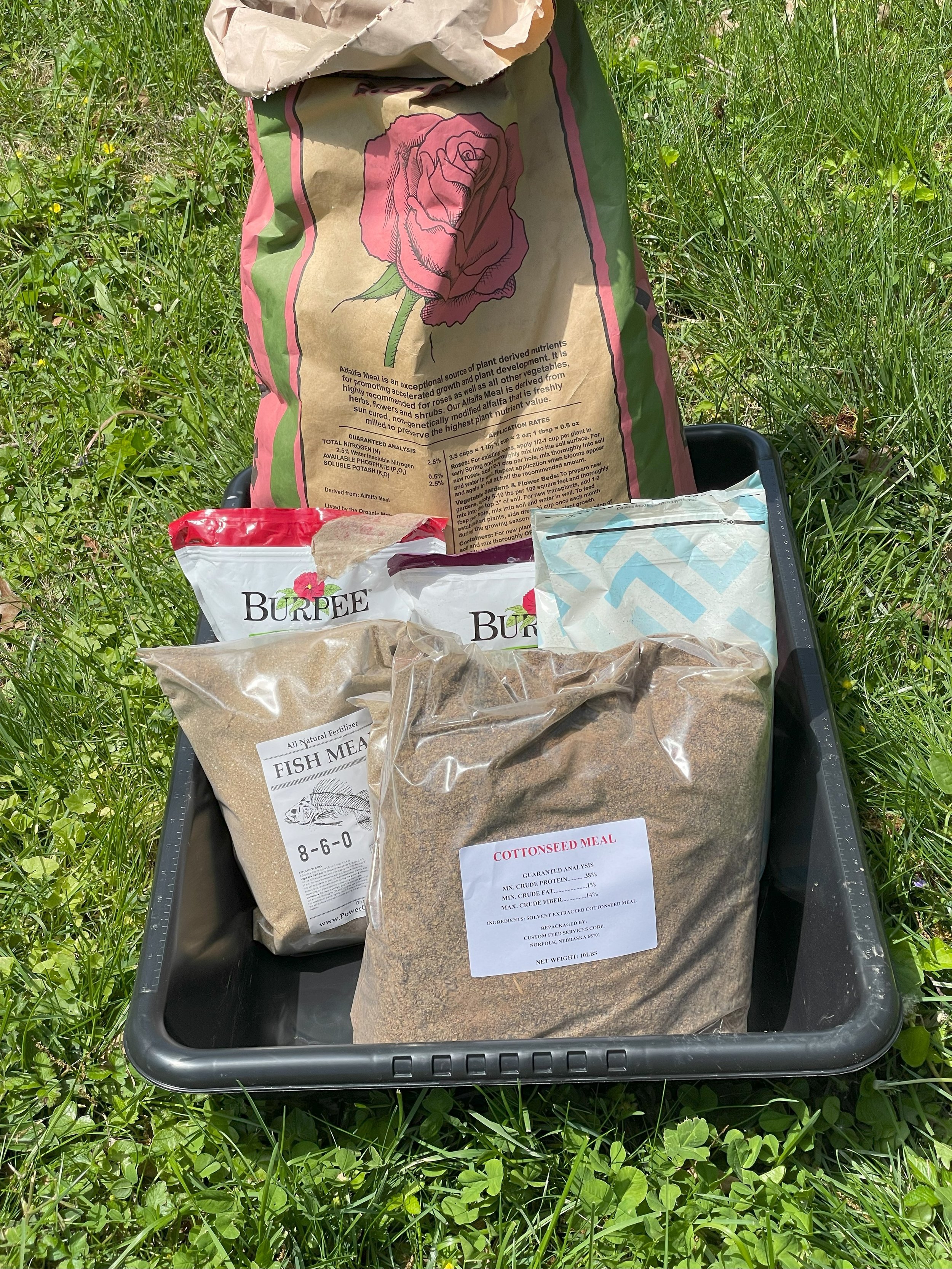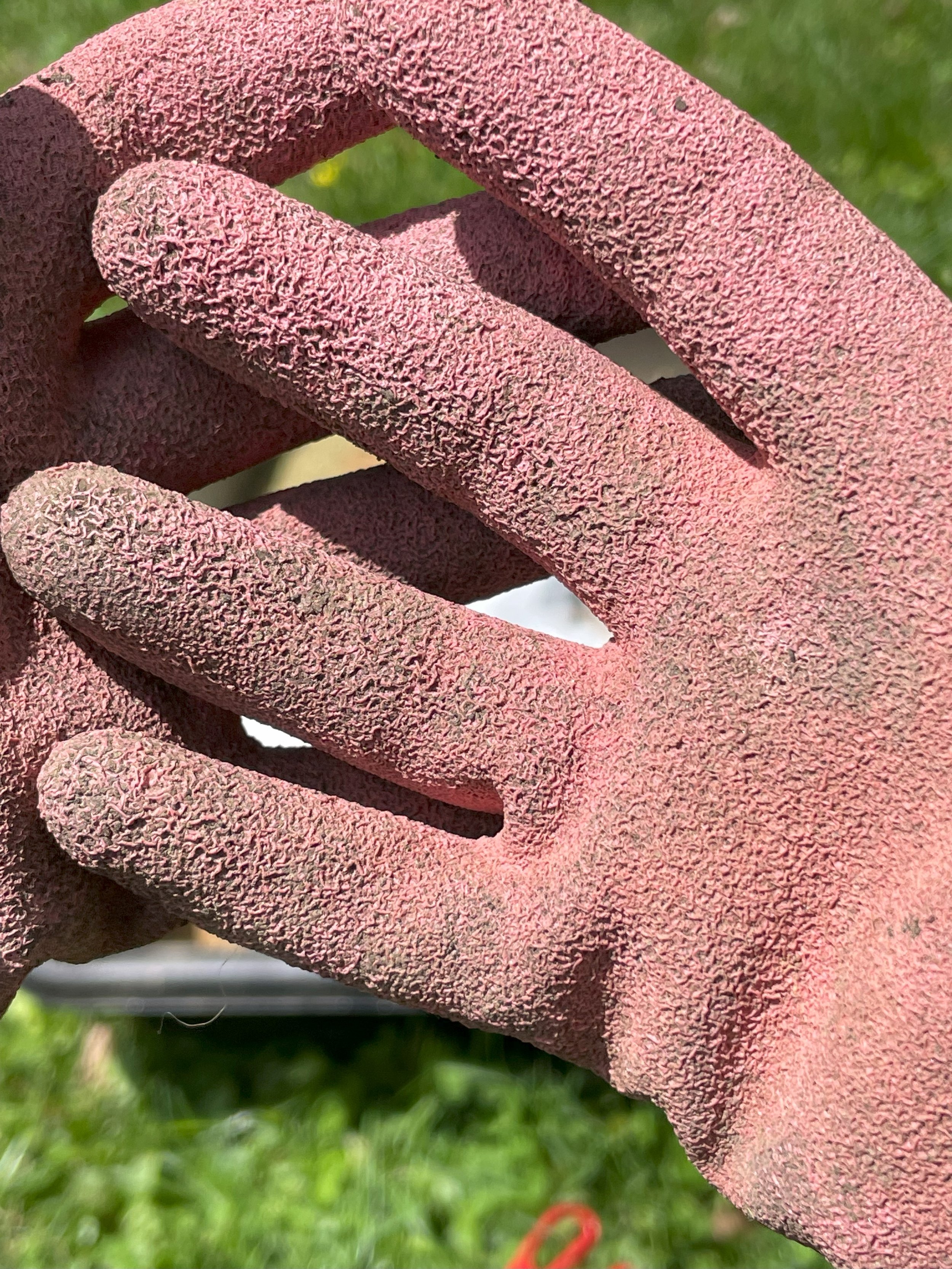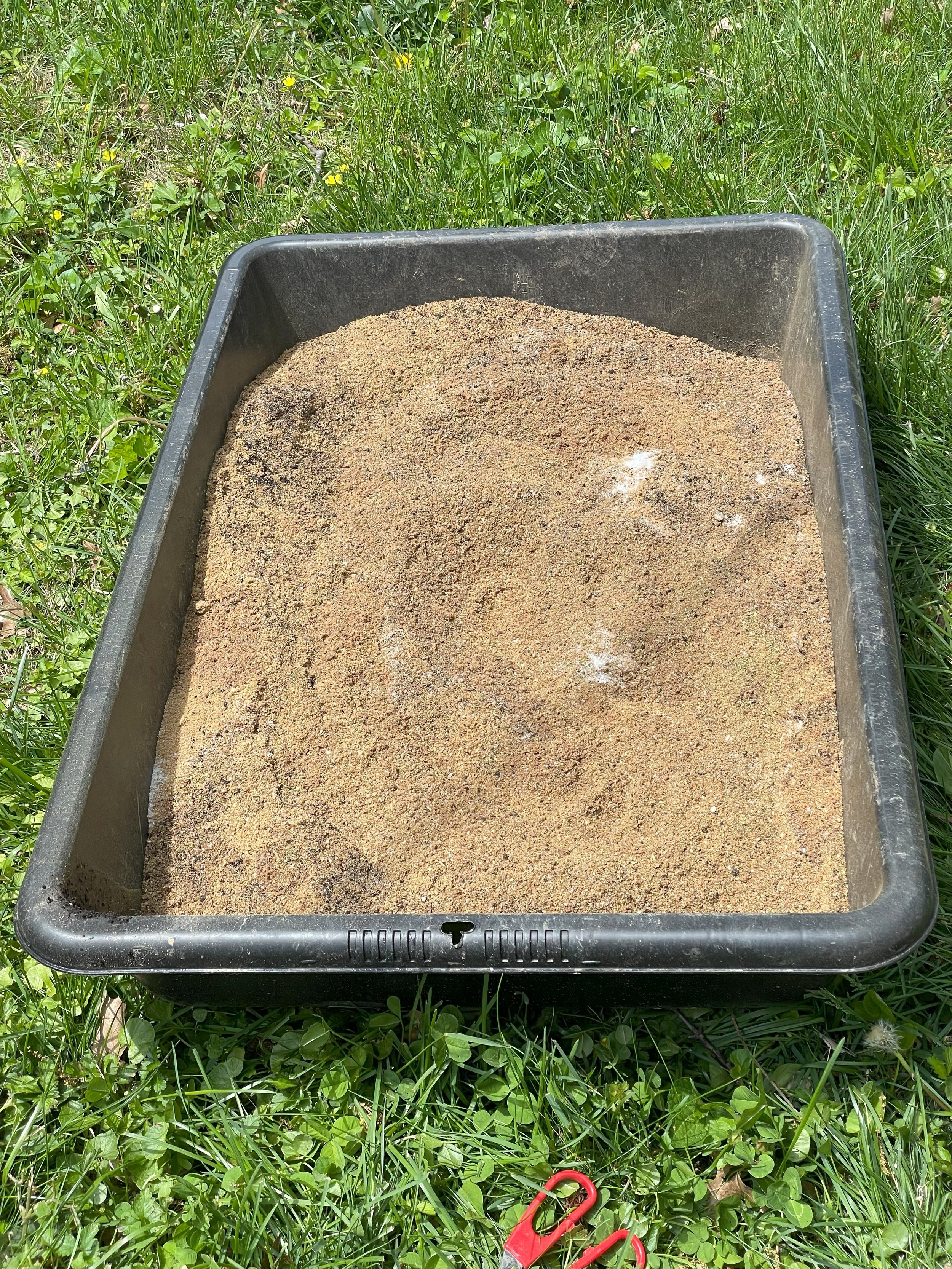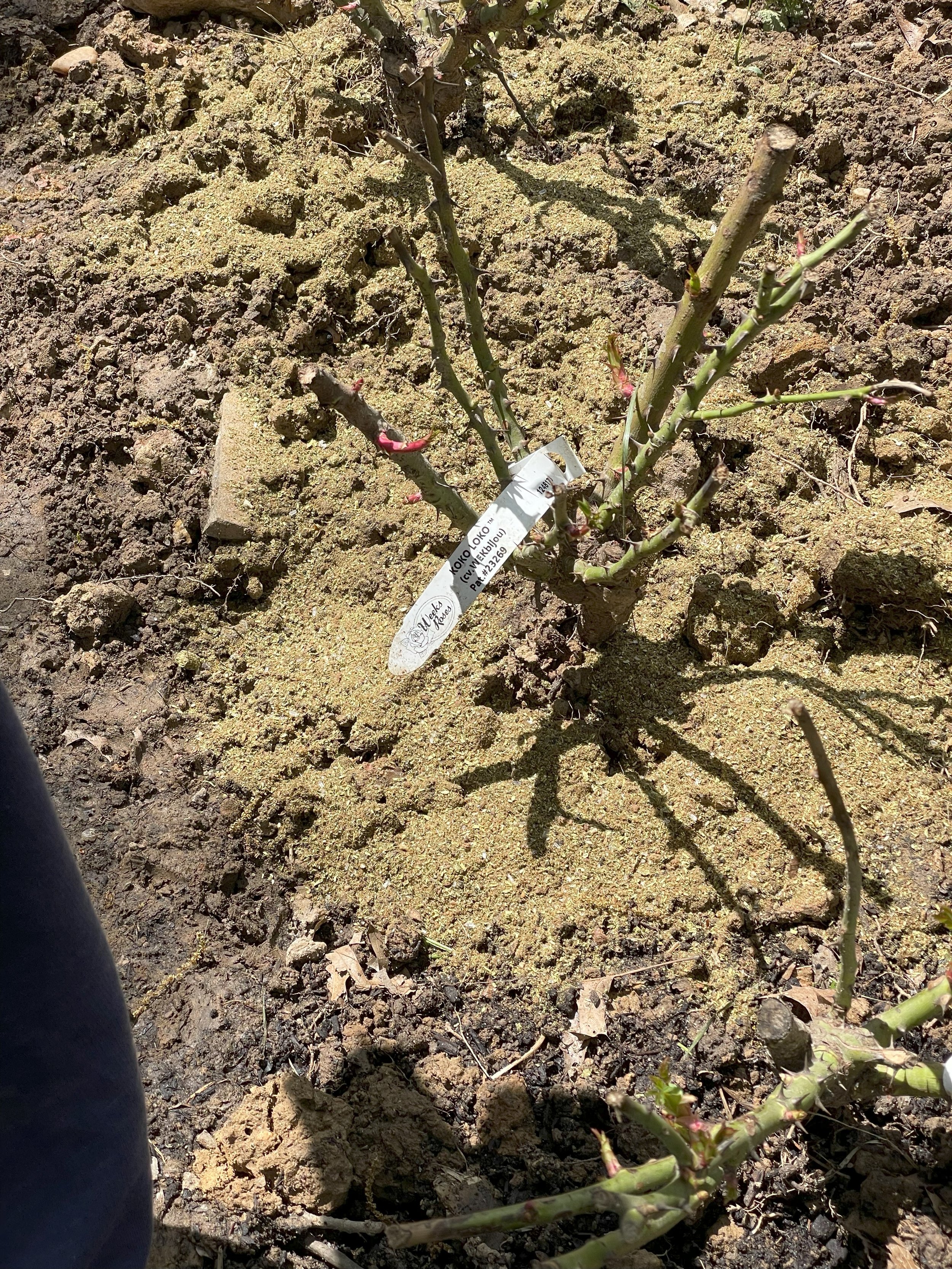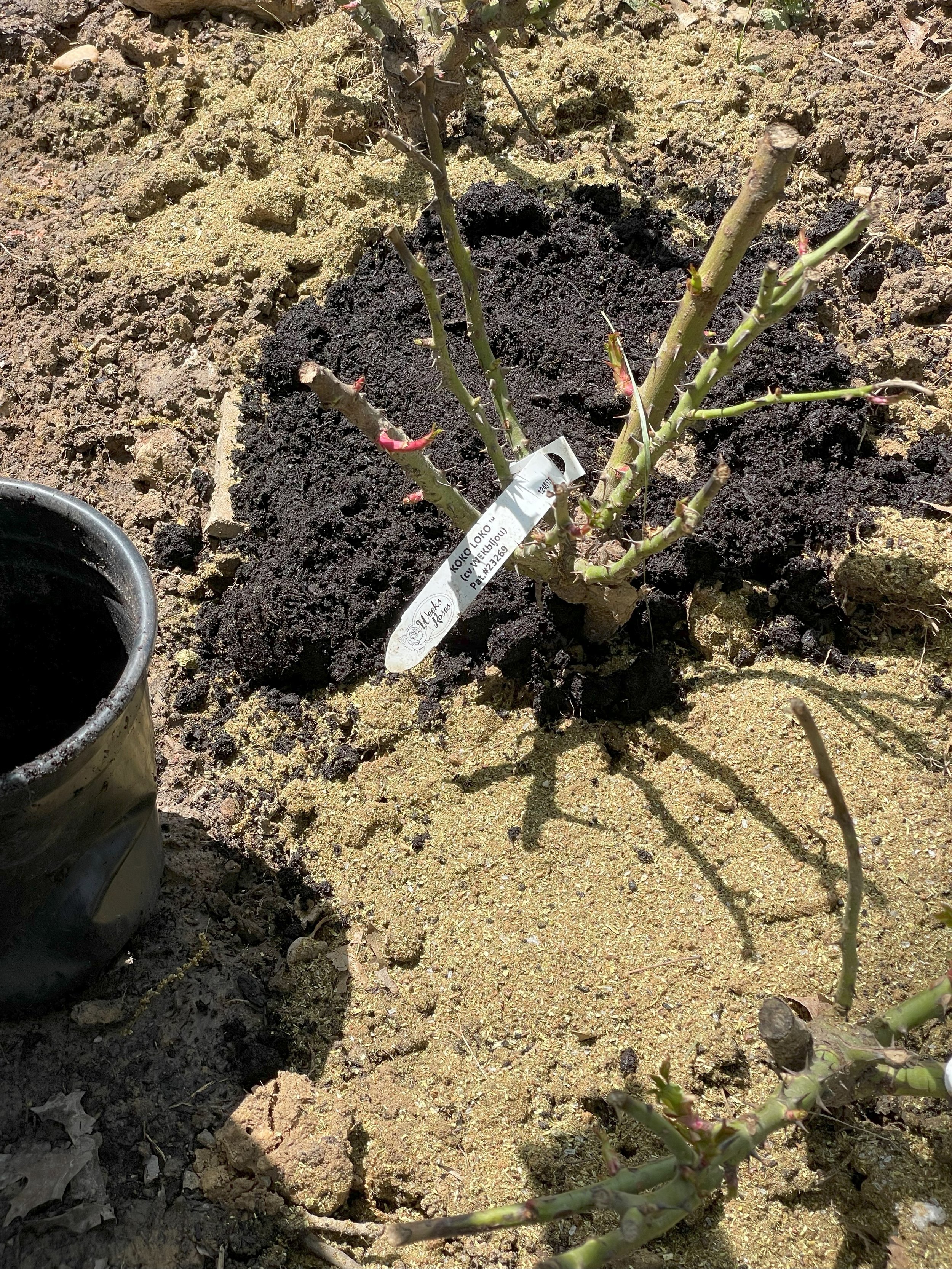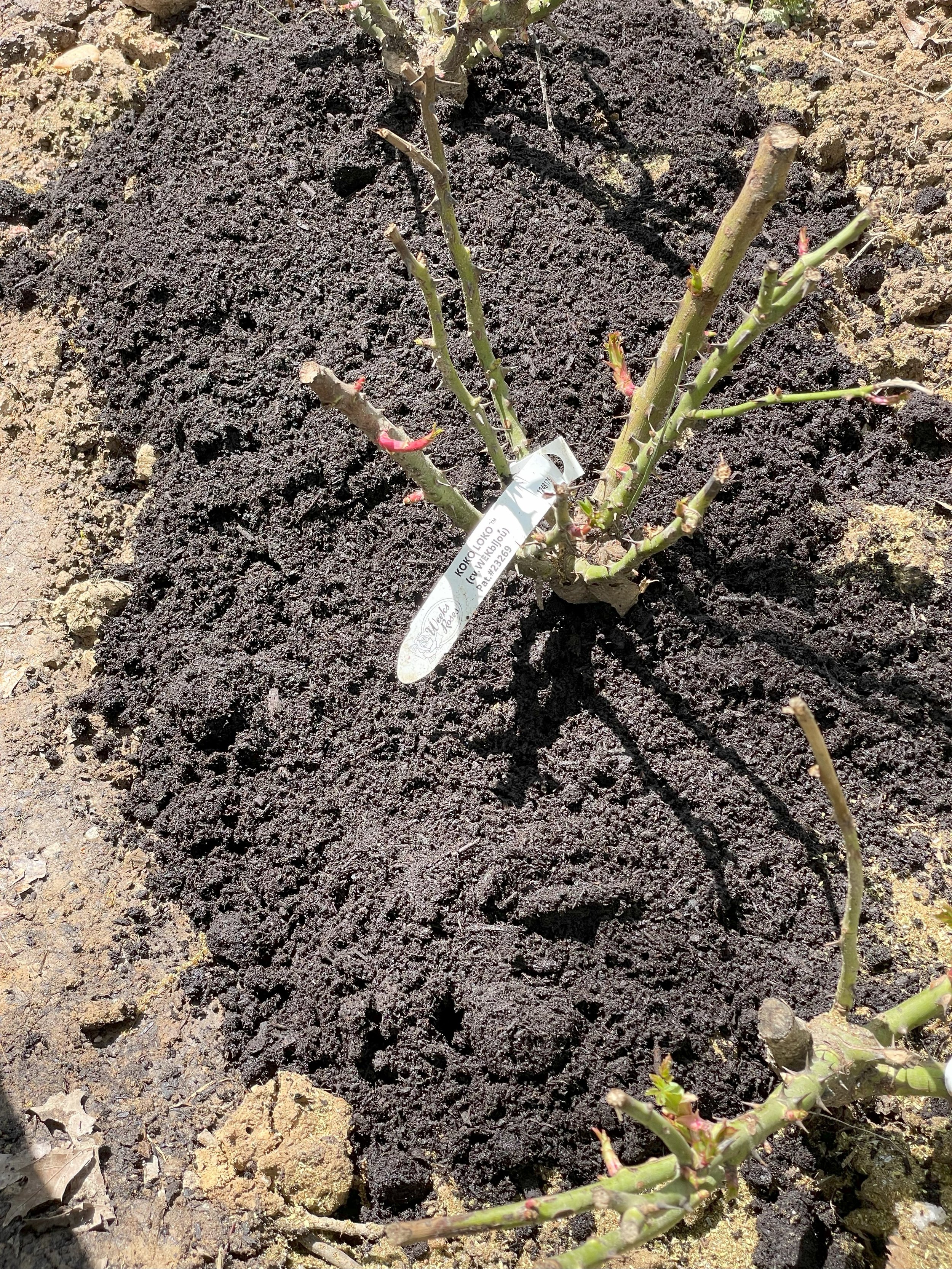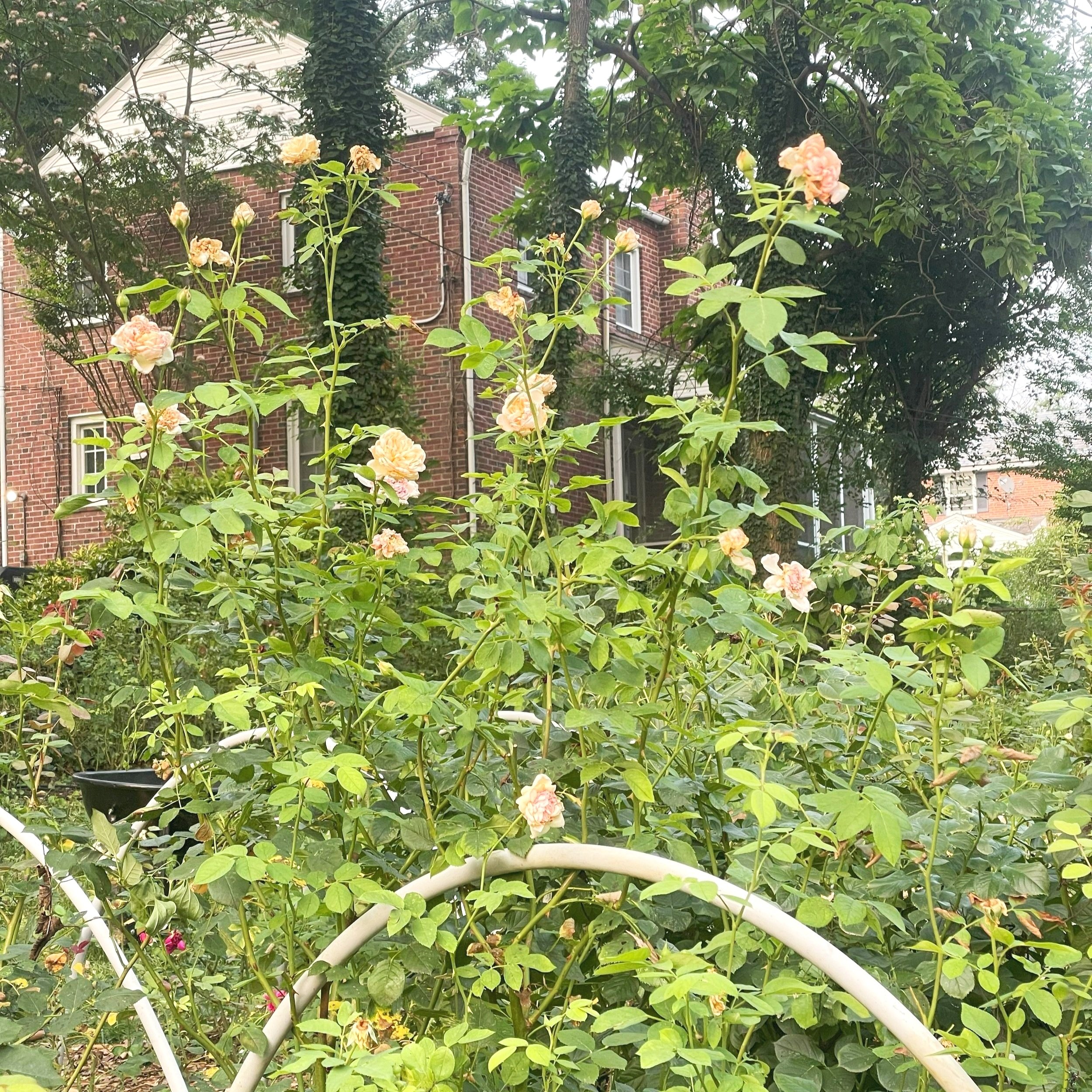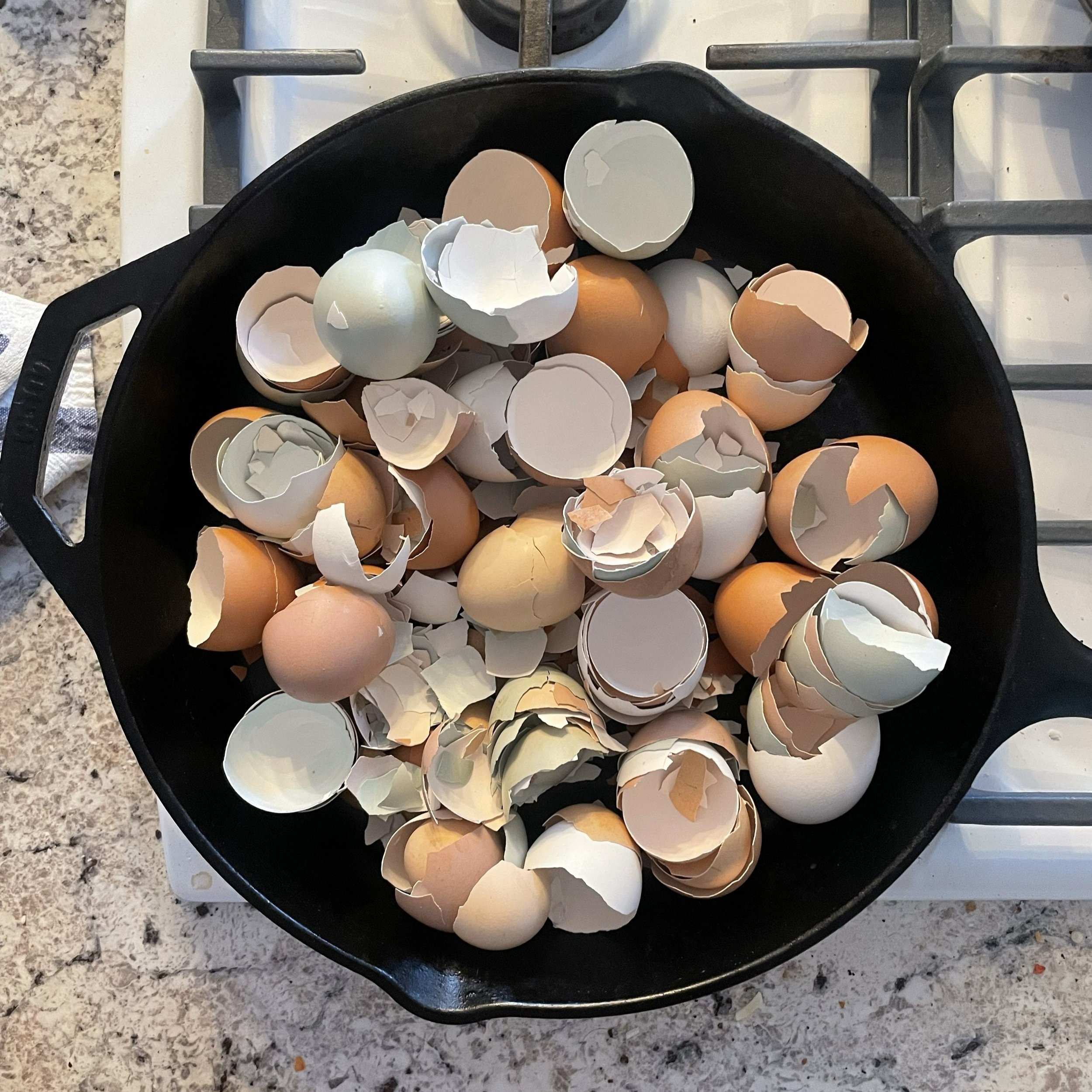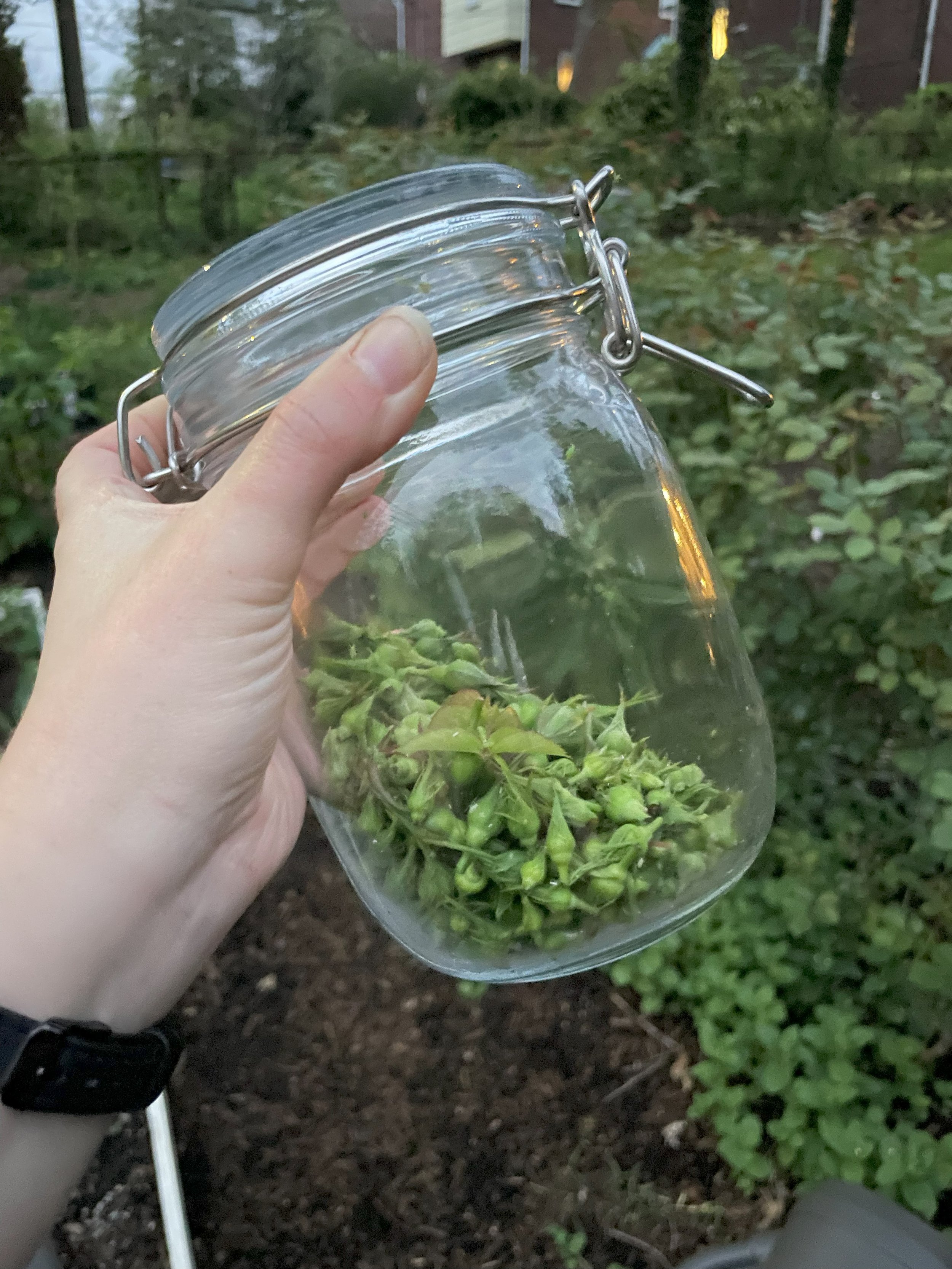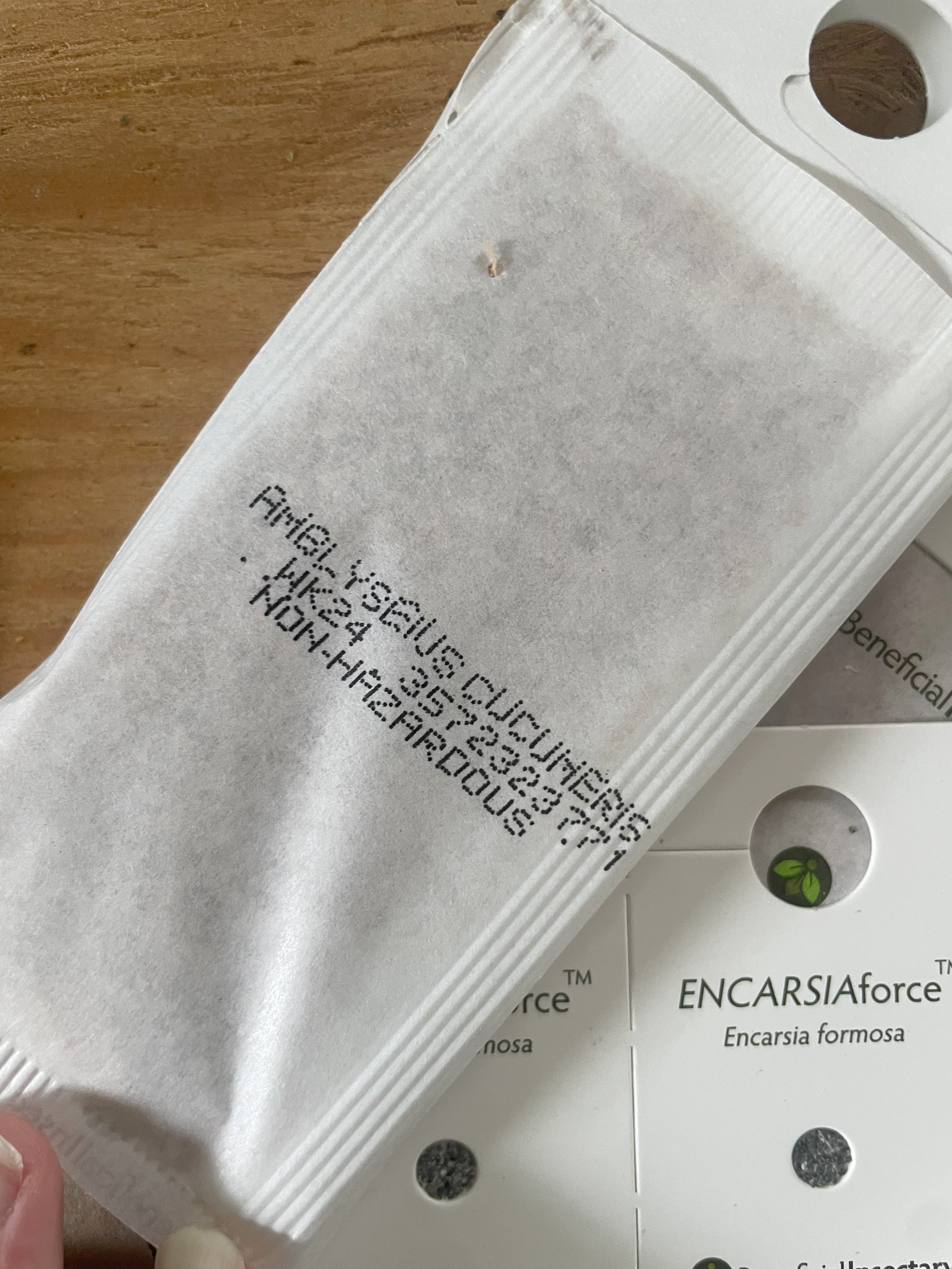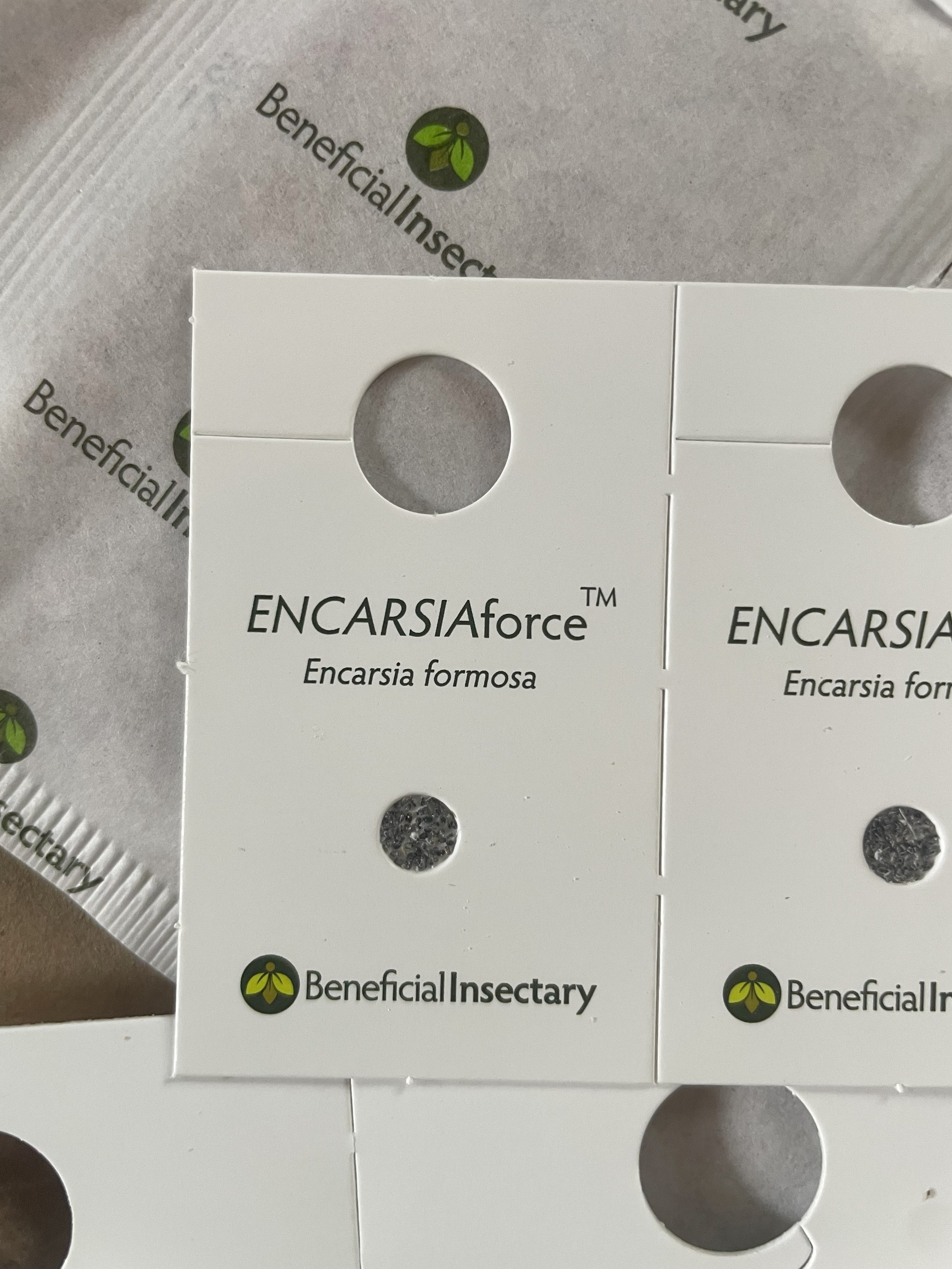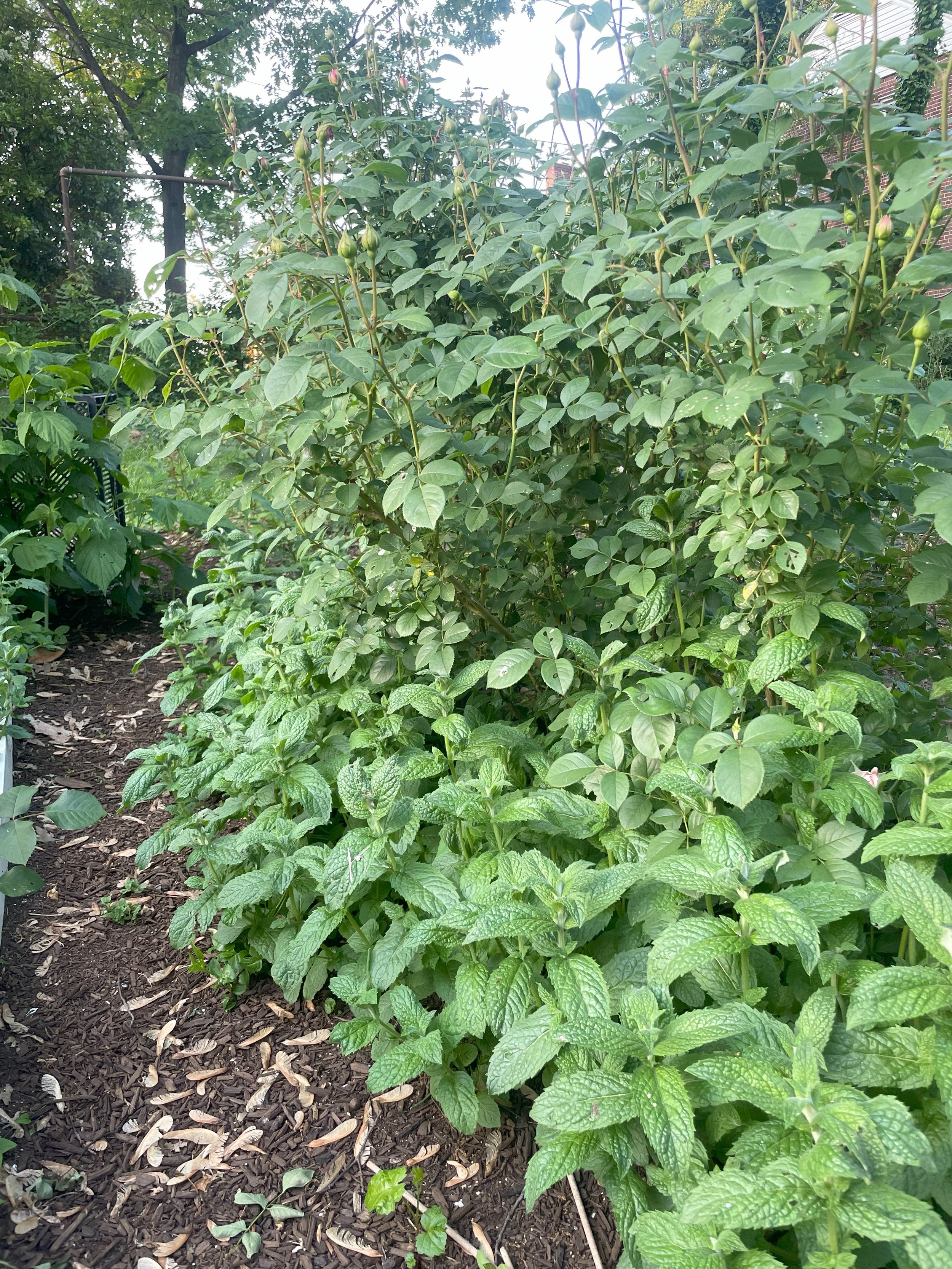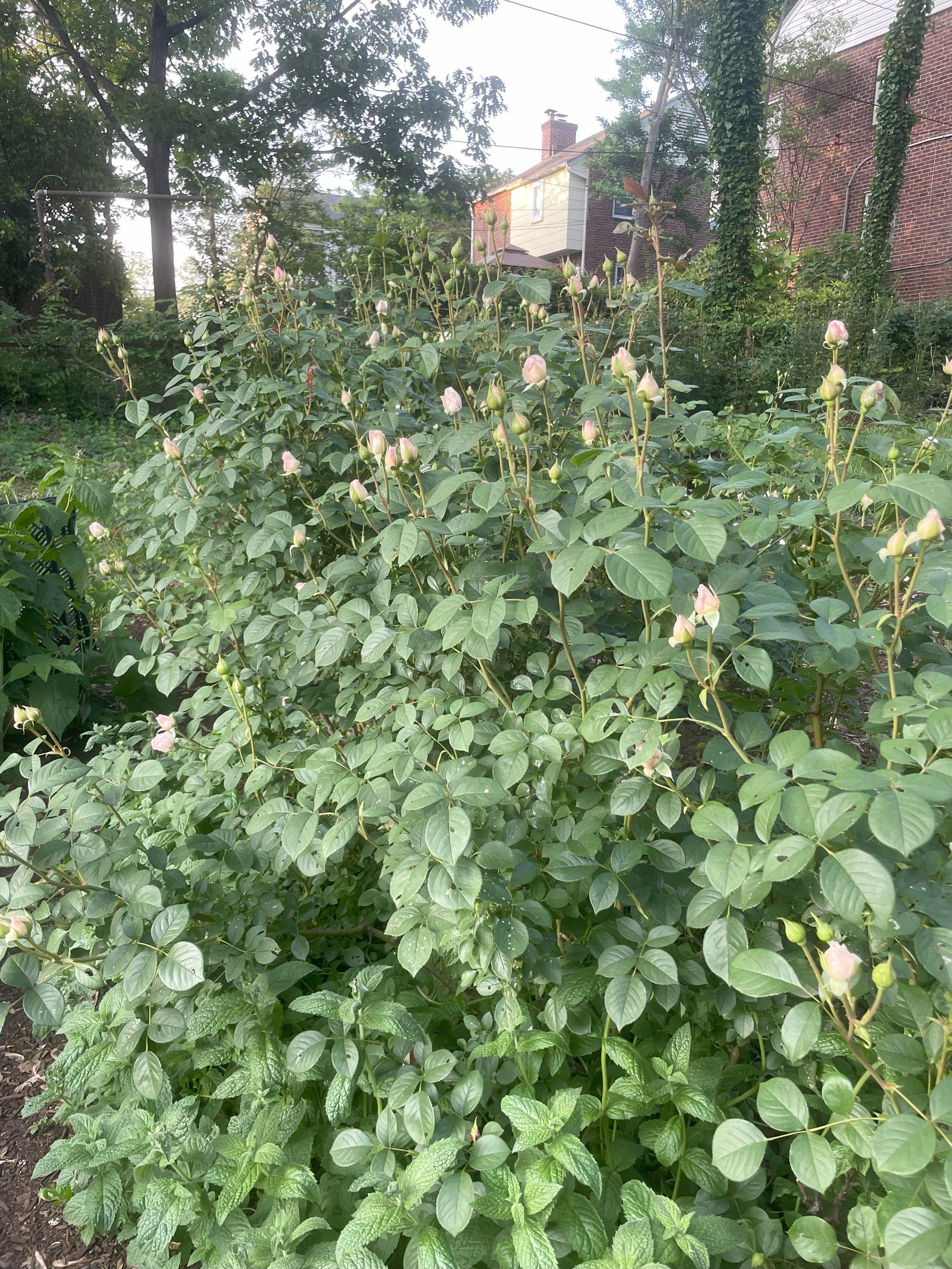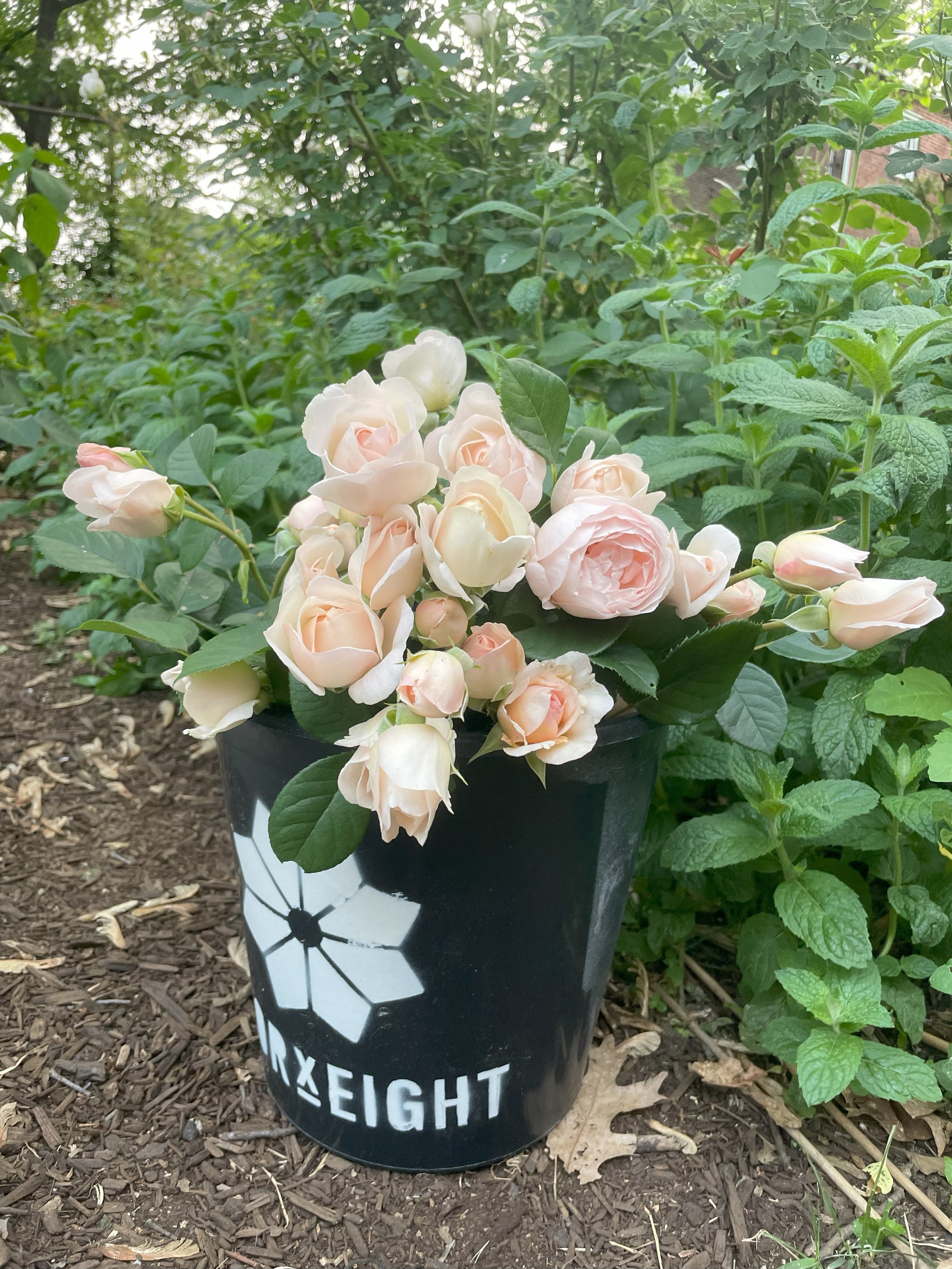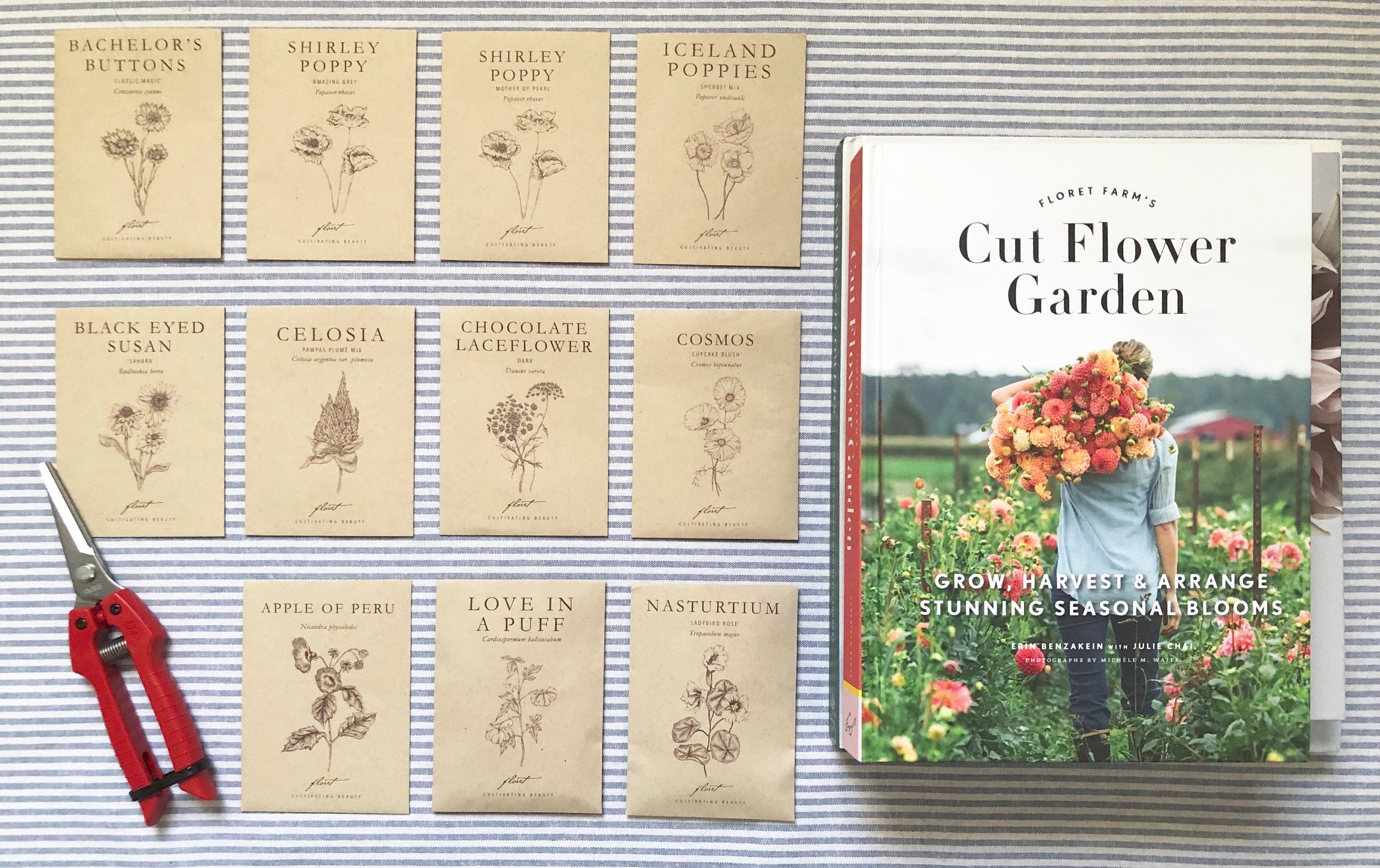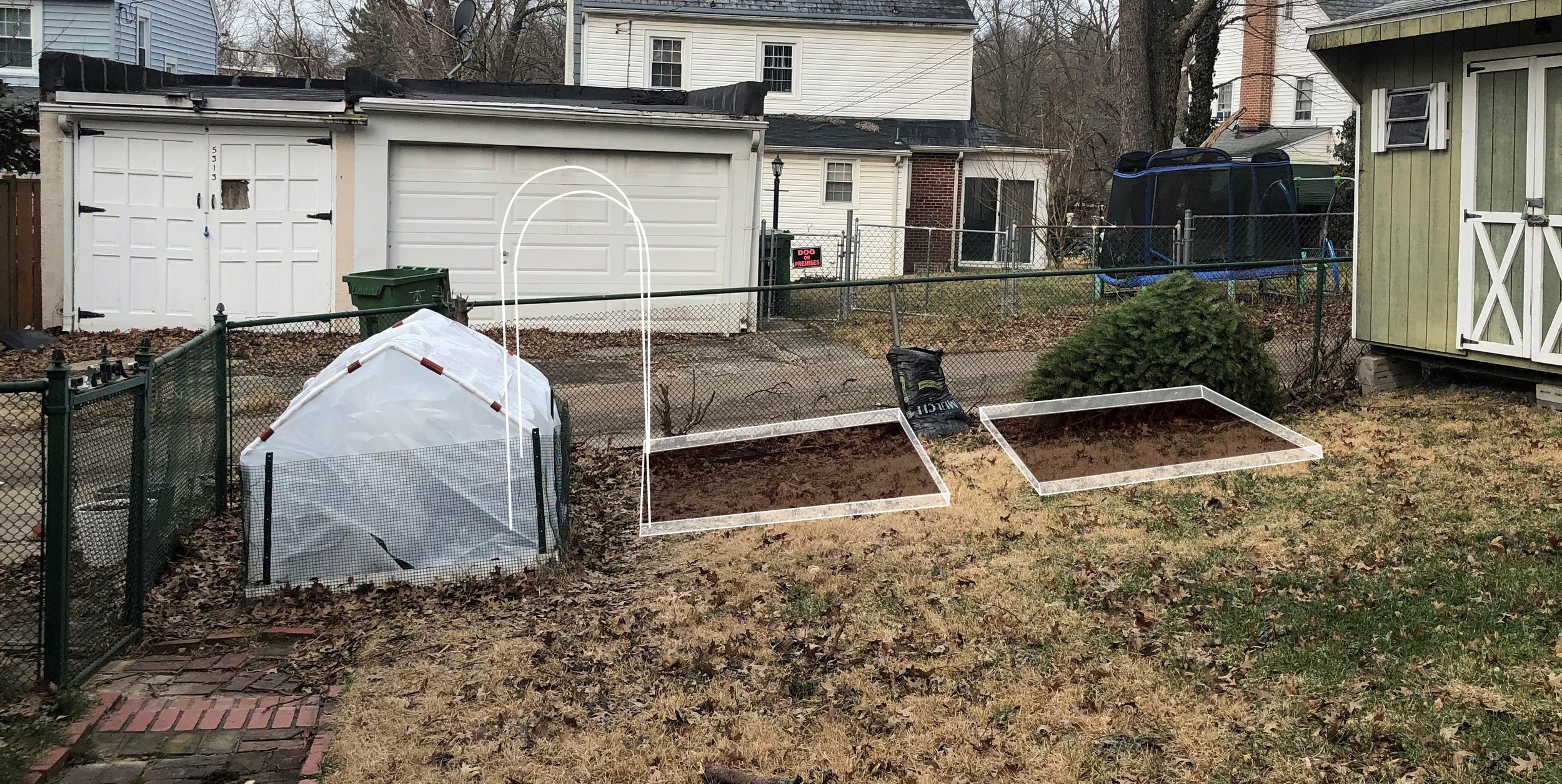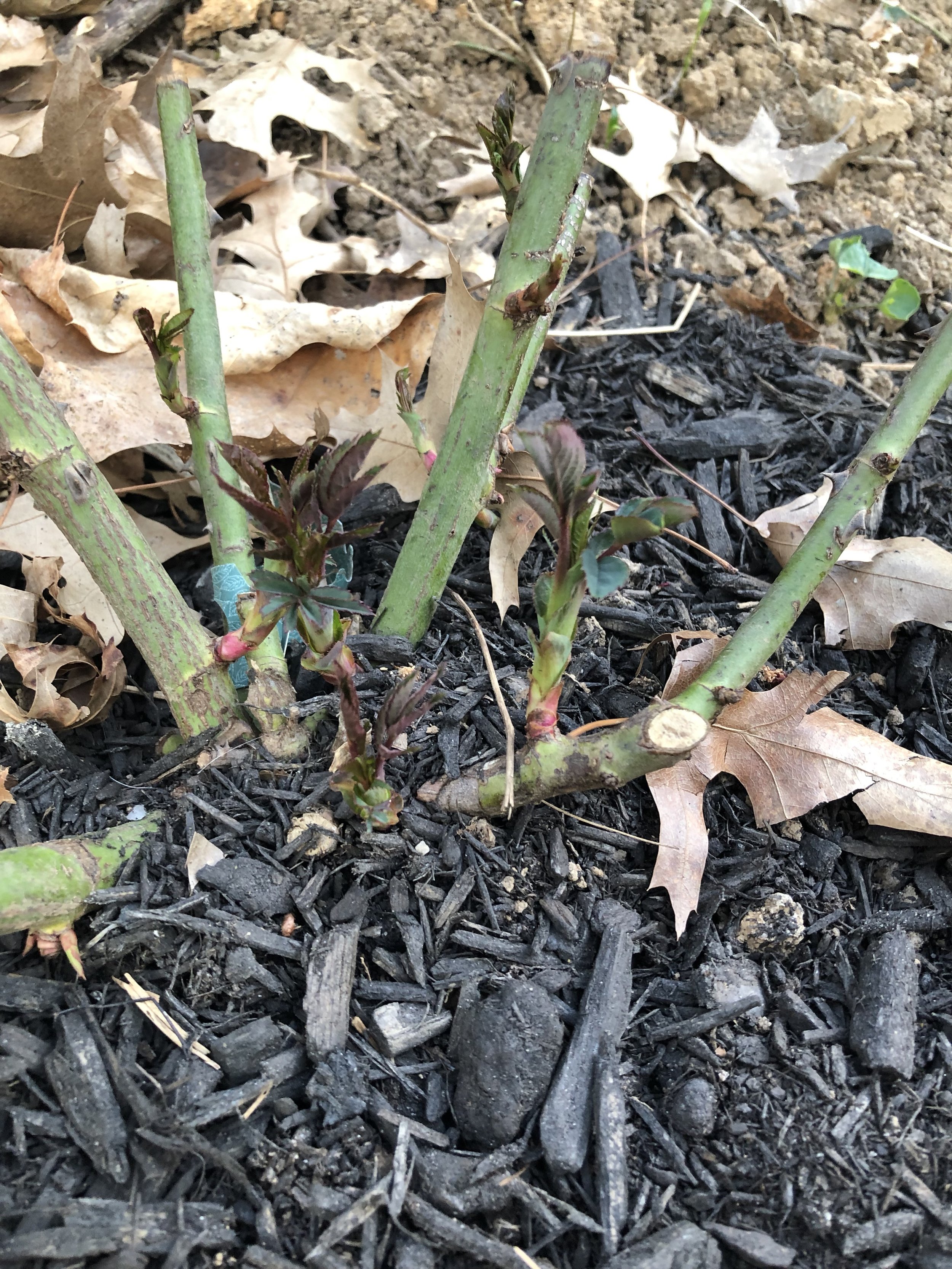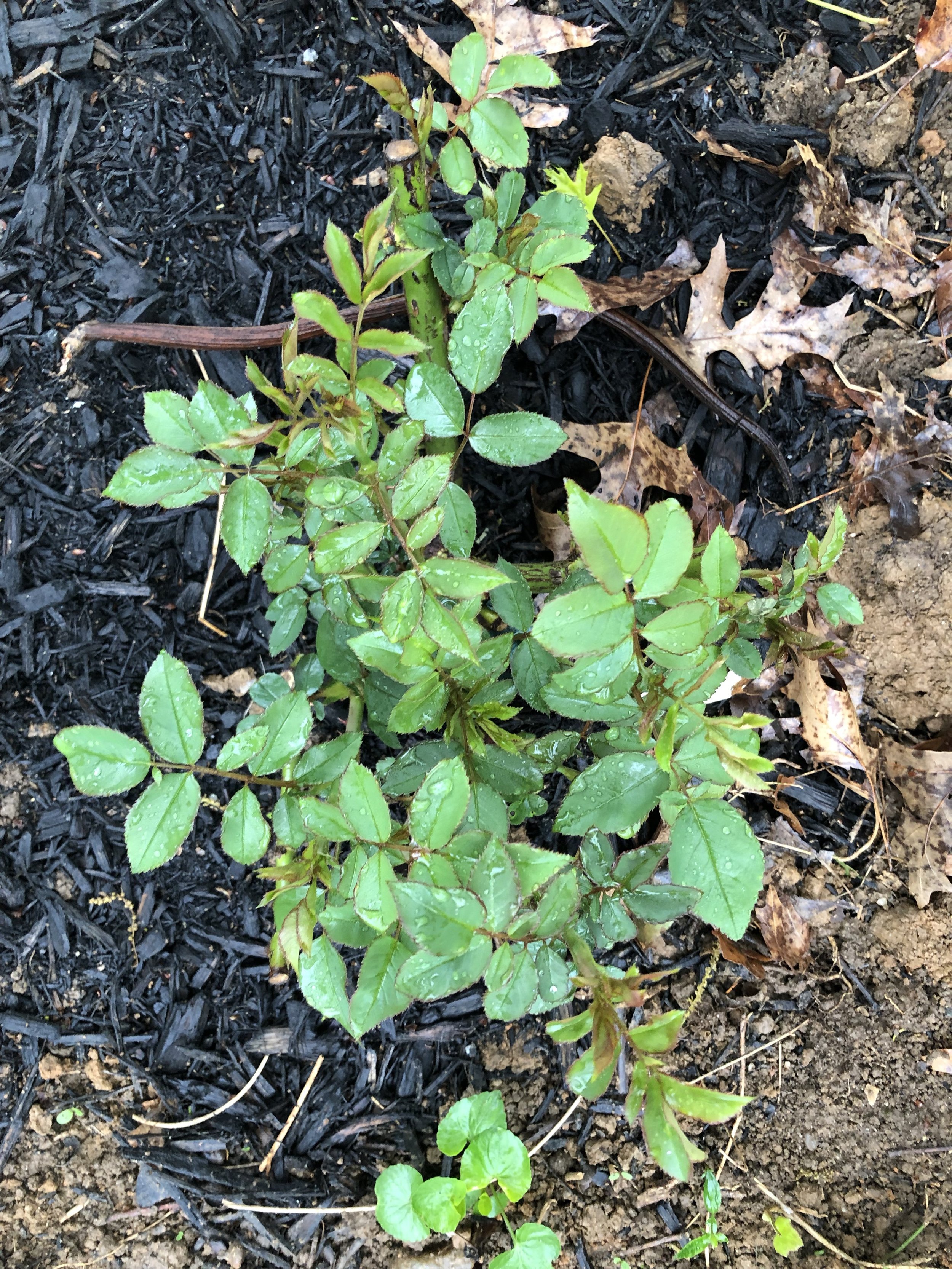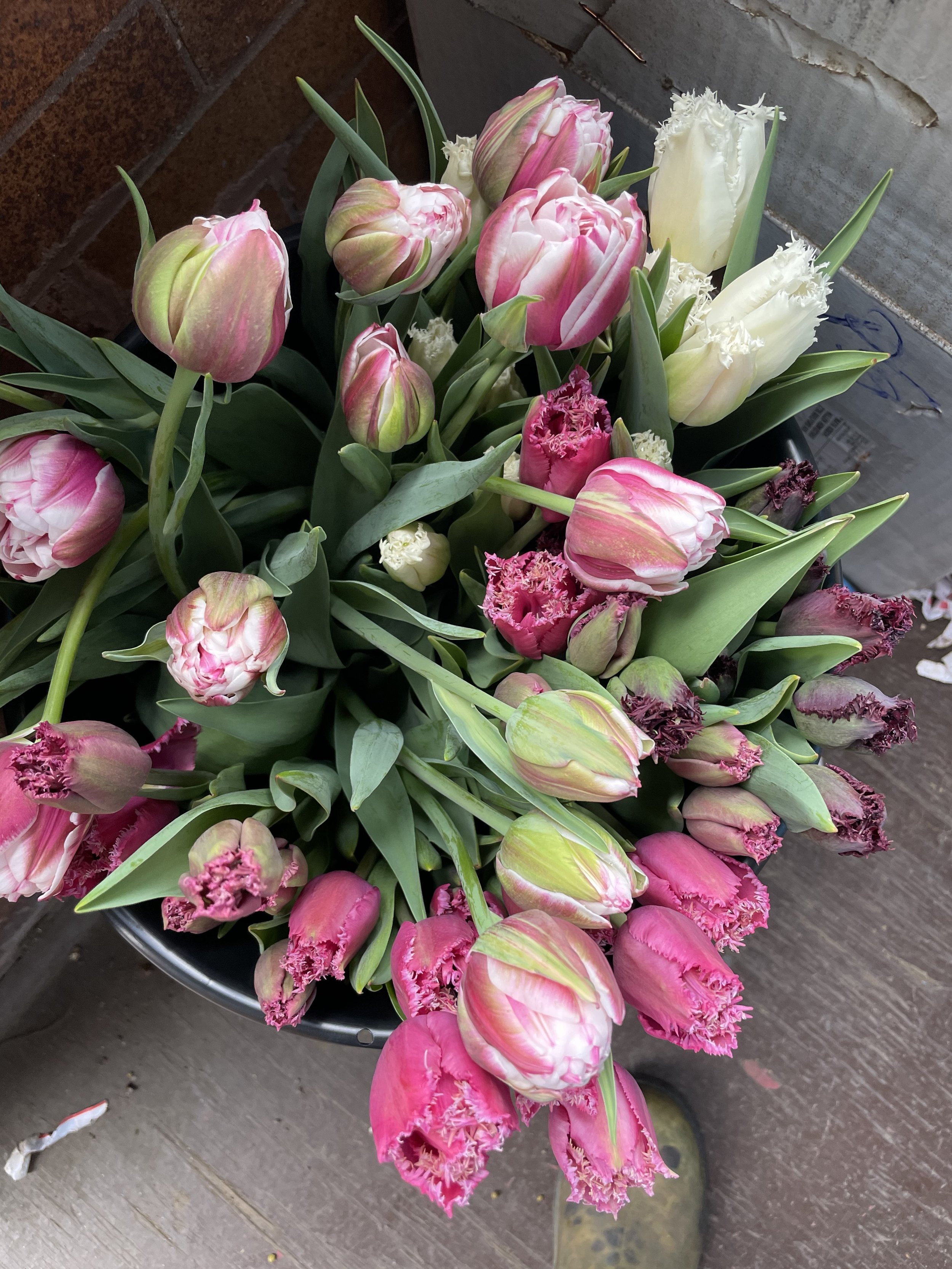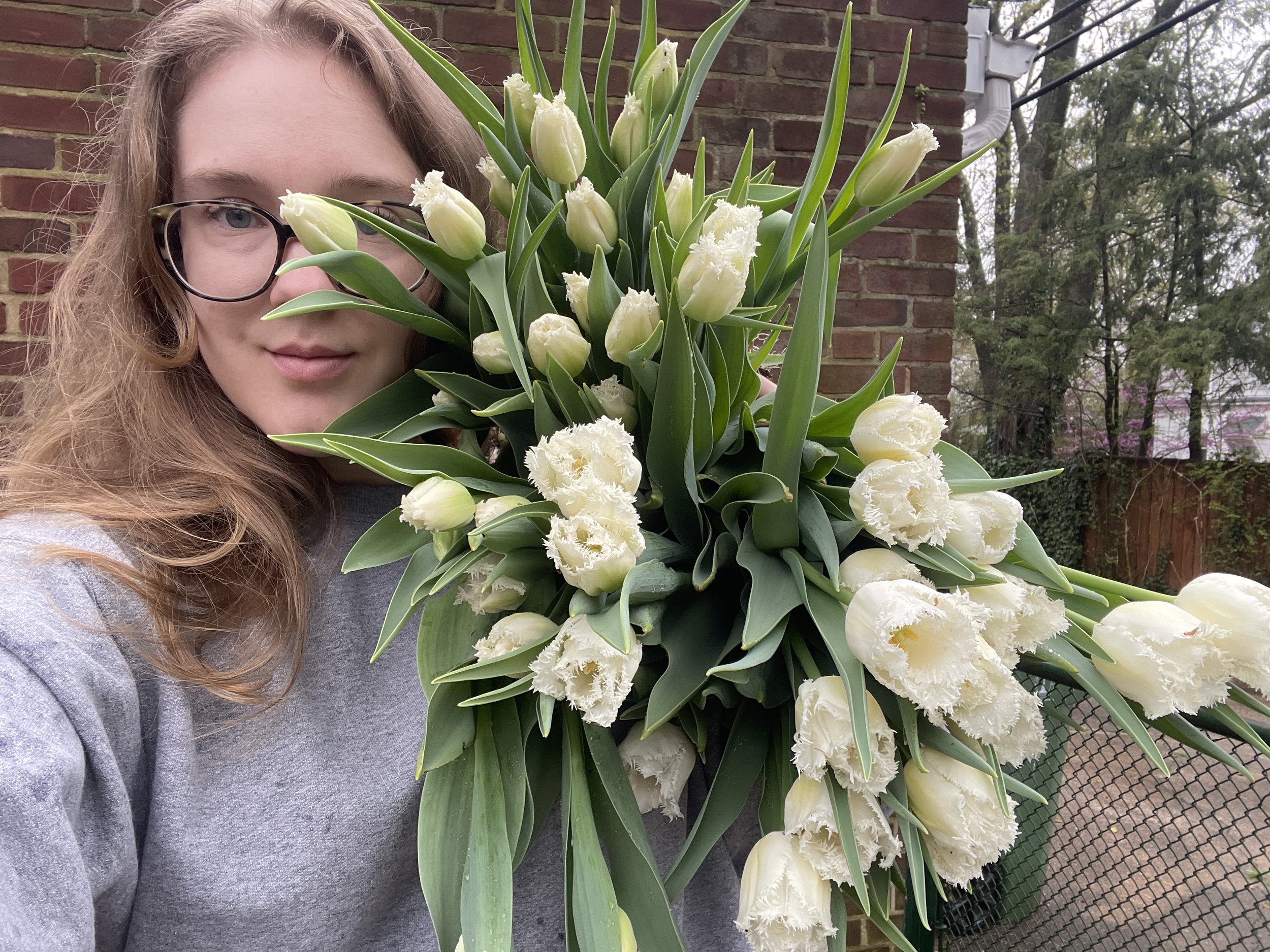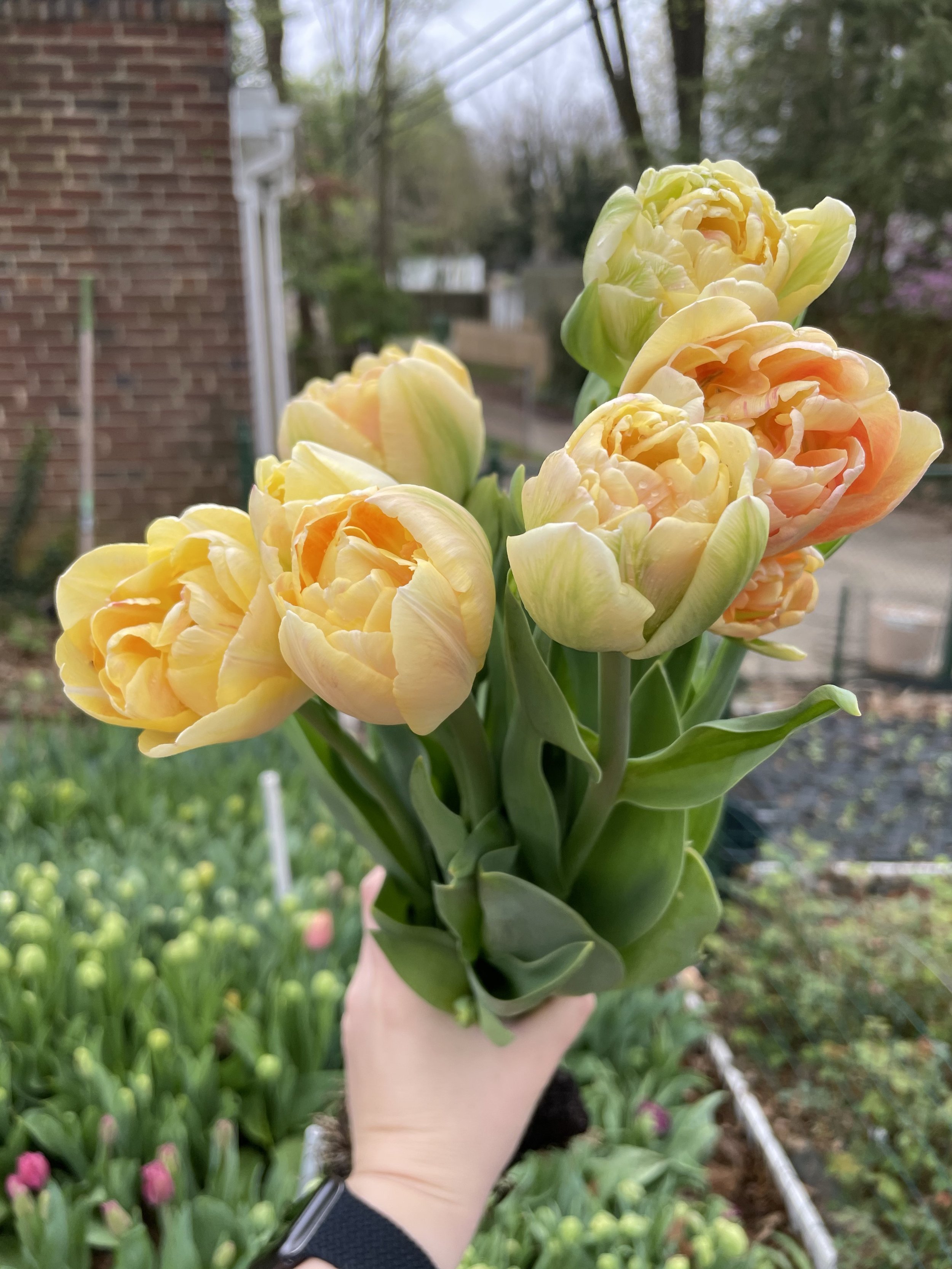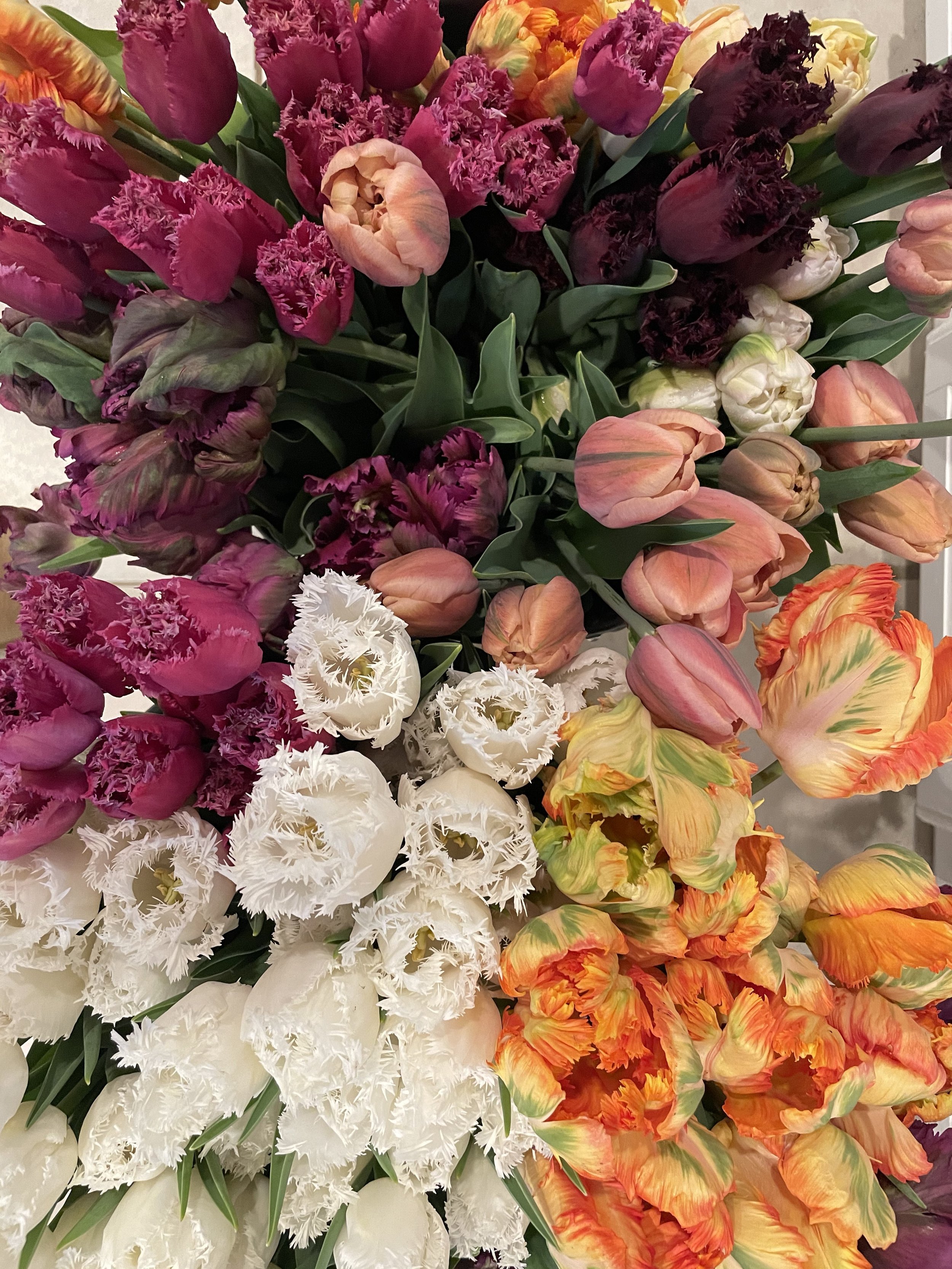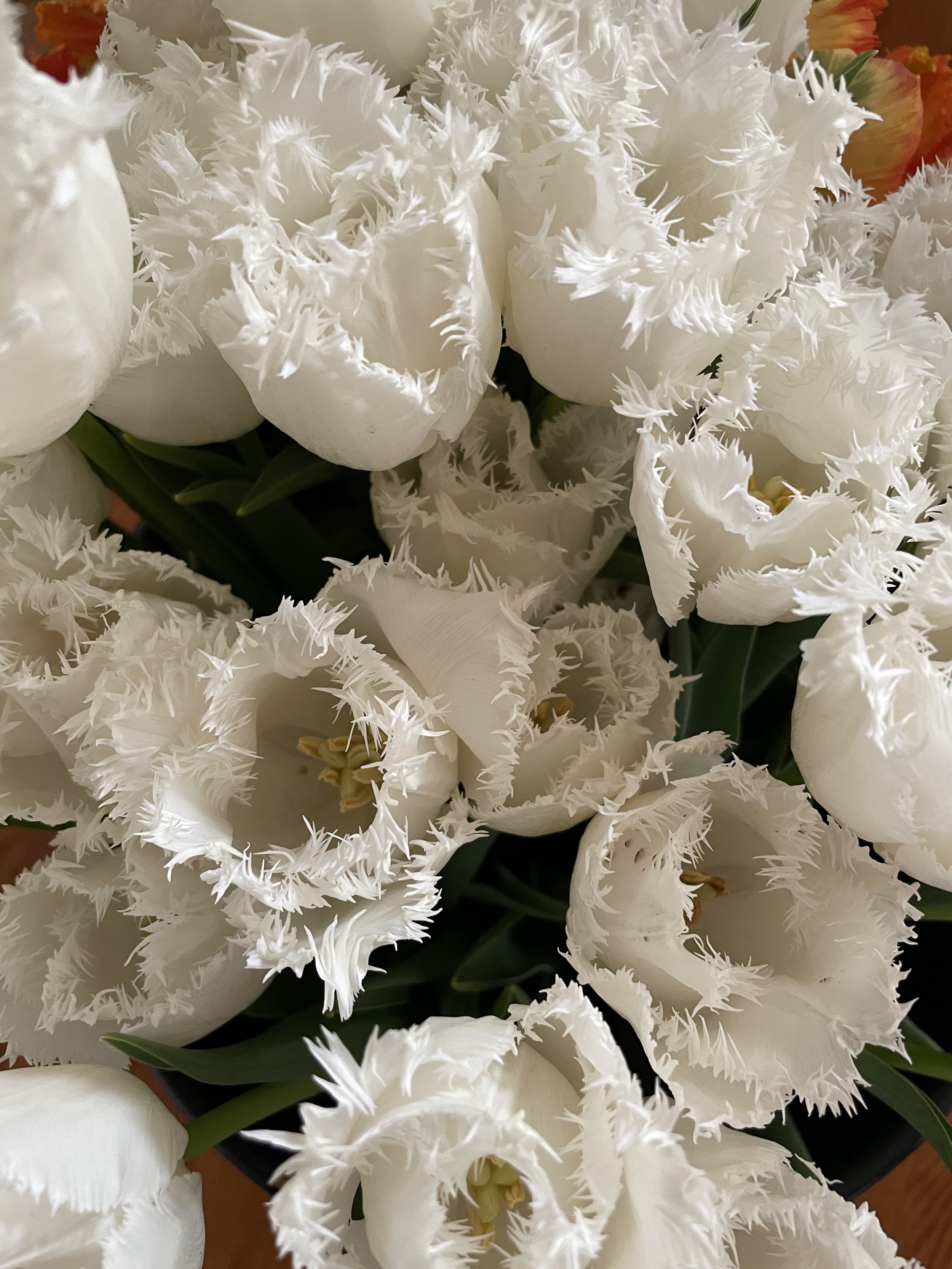A collection of random thoughts
On growing cut flowers, owning a side hustle style business, goals, life, and winging it.
In the vein of www.creedthoughts.gov.www/creedthoughts
Growing with Brand Photography
Cait Kramer Photography came over to take some pictures of the garden and they are AMAZING!
In May of 2022, I had the great pleasure of welcoming my friend Cait Kramer to the Florxeight garden. Caity and I met at Penn State, where we were both fitness instructors. When she moved from DC to Baltimore during Covid, I was just itching to have her to the garden. Caity has been a fantastic photographer since I have known her, photographing grad portraits, then weddings, and now adding maternity and branding into her impressive portfolio of work.
We planned this brand shoot in a rush. It was May, peak bloom season for the roses. I was between friend’s bachelorette parties, trips for work, weddings, showers - you name it, I had it on the docket last year. With 0 plan, 0 preparation, and only a little time, Caity worked magic with what I had. She made the garden and the roses look more beautiful than they ever have. Its the kind of magic that is really skill - the framing of the shots, the pose prompts, the interest in all the details.
Caity - the photos you took last year for me still leave me in awe. I’m sorry that it took you less than a week to send me the edits, and it’s taken me over a year to post them in a meaningful way. You can check out Caity’s website here: https://www.caitkramer.com/. She’s in demand so if you’re considering her for an event, branding session or family shoot make sure you plan ahead!
I did NOT plan ahead and didn’t get the change to have Caity back over for the 2023 season - something I plan to fix for 2024! Flowers are a visual business and having good photography of your product is invaluable. Garden roses are particularly hard because they are harvest as tight buds, and leave my hands before reaching their full potential. I need to be able to market my end product to florist so they can imagine the roses in their full glory, while still educating and selling my consumable product. The value of a good photography is a lesson I’ve been learning in my growing business!
How many bucket photos are too many bucket photos? Asking for myself.
Interested in Growing & Selling Garden Roses?
Sign up for Ellen Frost’s newsletter to listen to our recorded webinar on growing, selling and arranging with locally grown garden roses.
Are you interested in growing garden roses and selling them to florists? Or maybe you’re interested in growing roses to supplement your own design work as a wedding florist or farmer-florist. Heck - even just a home gardener who wants to know a little more about the business of local roses and how to make your cut flowers last longer!
If so, sign up for Ellen Frost’s newsletter here and receive a recorded link of our 90 minute Zoom webinar all about growing, selling, and arranging local roses. Ellen and the Local Color Flower team have been my biggest supporters since day 1 and I wouldn’t be here without their continued support. Ellen sends out a wonderful weekly newsletter filled with quippy flower content, local flower happenings, and frequently a lot of advice on local sourcing, flower arranging, and the business of flowers.
We had a wonderful chat, if I do say so myself, and I hope you enjoy it too! Plus I had way too much fun making these mashup logos - let me know which one was your favorite with a comment.
Lauren’s Favorite Fertilizer Recipe
Lauren’s Favorite Fertilizer Recipe - All Natural and Proven!
It’s not secret that roses like food. They haven’t survived for 35 million years, and 5000 years of cultivation by being picky plants. But they thrive with food. I picked up this fertilizer recipe in August 2021 from the Rose Chat Podcast and I immediately had to try it out. I love being able to use naturally derived inputs when possible. They tend to be gentler on young plants, less harmful when overused, and in general more well rounded. Natural inputs frequently contain micronutrients that manufactured fertilizers don’t. But, in reality, nitrogen is nitrogen, no matter the source. And roses need NPK to thrive.
Gaye Hammond is a well known rosarian based out of Houston, TX, and she has shared her favorite fertilizer recipe far and wide.
Gaye Hammond’s Not Secret Fertilizer Recipe:
1 cup alfalfa meal (or alfalfa pellets)
1 cup cottonseed meal
1 cup fish meal
1/2 cup bone meal
1/2 cup blood meal
1/4 cup Epsom Salt
Mix all together in a container and apply the whole amount to ONE rose. Yup you read that right. 4 1/4 cups of fertilizer for one rose. Gaye’s recommended application right is once in the spring, and once in the fall, which is a very low maintenance fertilizer for roses. If you are a casual gardener, this is a great low labor method. However, for better consistency at delivering nutrients and encourage my roses to pump out blooms, I modify the application slightly.
I buy the recipe ingredients in bulk, sourcing from whoever has the cheapest price with a reputable brand. This can be Amazon, Walmart, or even local farm supply stores on any given day. Make sure you price check because these can fluctuate wildly!
I use a large mortar pan to mix up all the ingredients. Make sure to wear gloves and use a mask for this! Aerosolized alfalfa dust isn’t great for your lungs (not science but common sense). About 10lbs of the 1 cup ingredients - alfalfa, fish meal, cottonseed meal - and 3-5lbs of the 1/2 cup ingredients - blood meal and bone meal - and then 2lbs of epsum salt, mixes up into a mixture that feeds my 150 roses for half the season or longer.
How I have modified the application of Gaye’s recipe is to apply ONE CUP of the fertilizer mixture in the spring and then following each flush. This continual application is a lot more labor intensive than Gaye’s method, but it delivers a more consistent dosage of nutrients when roses need it during their rebloom cycles, and encourages the continual production of the cut flowers that make my business run!
If that explanation was too “food blog backstory” for you, check out my summary below:
Gaye Hammond’s Not Secret Fertilizer Recipe:
1 cup alfalfa meal (or alfalfa pellets)
1 cup cottonseed meal
1 cup fish meal
1/2 cup bone meal
1/2 cup blood meal
1/4 cup Epsom Salt
Lauren’s Modified Application:
Mix and apply 1 cup of mixture in spring, and after each flush of blooms, approximately 4-8 weeks depending on weather. Sprinkle in a ring around the rose base, covering the approximate root zone. Water in well, and cover with mulch or compost, depending on application time. Rake back applied mulch to apply fertilizer if using mulch as a ground cover or weed suppressant.
Happy Growing!
5 Regenerative Ag Practices I’ve Been Utilizing in 2023
5 Regenerative Ag Practices I’m Taking into 2023
Regenerative agriculture is in the zeitgeist. Whether you chose to implement it or not, there are some undeniable benefits to taking a few regenerative ag practices into your farm or garden. Focusing on improving soil health & structure leads to long term higher yields and less resources spent on inputs. Focusing on environmental and habitat health attracts beneficial animals and insects to your area, which help manage crop-harming pests.
Every year, in late winter, it seems like Jennie Love releases a huge backlog of content on her podcast No Till Flowers Podcast. The episodes arrive at a time where the roses are just waking up, and I’m ready to dig my hands in the dirt and see some life come up! While not every regenerative ag practice is feasible in my closely-planted, tiny urban yard, I’ve adapted a few to try out this year at the Florxeight homestead.
5 PRACTICES FOR FLORXEIGHT ‘23
Natural & Recycled Inputs
Pulse Watering
Integrated Pest Management
Companion Planting / Intecropping
BRIX Tracking
1.NATURAL & RECYCLED INPUTS
Its easy to love the idea of natural and recycled inputs - especially for new growers just starting out (no $$) or small scale growers (no economy of scale from buying in bulk). An oldie but a goodie, I’m finally trying out the JADAM eggshell input from one of Jennie’s early episodes. I was lucky to be able to spend some time with college classmates in February for our annual “ski weekend” (skiing is optional) and collect the eggshells after Saturday brunch. These beautiful shells came from a friend who has chickens, which gives them some magical powers in my imagination. I also love the idea of recycling bits and pieces of the roses in a JADAM juice. Between disbudding and stripping off foliage at harvest, the roses product a surprising amount of green waste. As long as it doesn’t show signs of disease, why not let it ferment in some rainwater and see what happens?? Plus cannibalized plant material just seems like something roses as a species would enjoy…
2. PULSE WATERING
I am VERY intrigued by this concept. Watering less but making it more effective?? Sign me up! The idea behind pulse watering is that watering less deeply but more frequently, creates a more efficient movement of water through a soil structure to hit more of a plants root zone. This concept has been applied successfully by farmers of dahlias and almonds in Australia. Pulse irrigation being proven successful on almond trees in Australia and California really sold me on trying the concept. As much as dahlias and roses share overlap in the “fussy flower” realm, they have incredibly different growth habits and root structures. Dahlias are a shallow-rooted tuber plant; roses are deep-rooted perennial shrub - much more in common with an almond tree than a dahlia.
My biggest challenge with implementation will be technology. Most pulse systems rely on an automated timer or moisture meter to deliver water on a set schedule or as weather conditions would lead to plant stress. I don’t have either of those options - I don’t even have an irrigation system! Relying on hose watering is a huge PITA but its where I’m at for one more season at least. While I won’t be able to water for 15 minutes each hour, for 6 hours, I can attempt to adapt the concepts of pulse watering to my specific situation potentially by watering less but watering every day? Stay tuned!
Good info on pulse watering:
Jennie Love Podcast - The Power of Pulse Watering: Effective Irrigation and Better Plant Health with Emma Horswill from Earthenry Farm
Winkie Dahlias - who literally wrote the book on pulse watering for dahlias!
Almonds in California - also has a plug for cover cropping and mulching. Big mulch fans at Florxeight
3. INTEGRATED PEST MANAGEMENT
I have been implementing, or attempting, integrated pest management for a few years now. My biggest pest problem is with thrips. They completely ruin blooms and are incredibly hard to combat without a very aggressive approach. In past years, I would order in specific bugs like minute pirate bugs, when I began to notice thrips affecting my blooms. This year, I jumped on an offering from Heirloom Roses who was testing out a beneficial insect subscription. $120 for 3 months, when I would previously pay $80 for one shipment? Sign me up! Look for a full blog review in the future as the monthly bugs roll in.
4. COMPANION PLANTING & INTERCROPPING
My only experience with rose companion planting or intercropping has been for pest management - with MINT. Yes mint. The notoriously invasive, impossible to control, strong smelling herb. And let me tell you, it works. My roses which have mint planted under them are some of my healthiest and most productive plants I own. I’m looking to expand my mint plantings and other repellant plants, like garlic, to intercrop with my roses. Bonus: it doubles up on space! Herbs that repel pests and double in the kitchen. Garlic, thyme, basil, and oregano are all in my future.
5. MEASURING & MONITORING BRIX LEVELS
Brix is a measure of sugar content in water. Measuring Brix in plants requires the pressing of plant material into a liquid, frequently with a garlic press, and placing in a refractometer to measure the sugar content. And it might feel counterintuitive BUT higher sugar levels = less pests! The higher sugar levels make the plant material unattractive and indigestible for most insects. I confess that I bought a refractometer last year and did nothing with it. But this year is the year! Armed with molasses, a garlic press, and my no-longer-new refractometer, pests beware!
Good info on Brix here:
FYI - the verdict on molasses as an effective way to increase Brix and provide micronutrients is out. I am trying it anyways to see what happens.
Origin Story
All heroines have an origin story.
All good heroines, and villainesses, have an origin story. Mine tracks right along the lines of dozens of other people who have recently entered the cut flower industry: I found Floret Flower.
I think it was via Pinterest and I’m about 86% sure it was dahlia photos. We had lived in our current house for a two years and I was feeling the spring itch to get into our tiny 4’x8’ raised veggie garden. Jalapeños had been my most successful crop to date. And then I saw IT. THE flower picture that would set me down a winding path towards where I am right now. I wish I remembered exactly which picture it was, but I do remember spending hours on Erin’s website, reading about flower types and varieties, learning about flower farming, seasonality, and every other piece of content I could consume. I had a second tab open on my browser and was rapidly stacking up an Amazon cart of recommended flower and farming books. For those of you who haven’t heard of Erin or Floret Flower, check them out here. They are a great resource for information and products - I still indulge in a few Floret seeds every year to add to my “garden” areas.
A Floret seed haul circa 2019.
All thoughts of a spring vegetable garden went out the window. I went on what can only be described as a bender, buying flower seeds, bulbs and tubers. Sources were scarce since I was buying late in the seed starting season but I managed to scrounge up some things to plant in the spring. Trying ALL the varieties became a passion project (insert meme here). An idea started forming in my mind that maybe, just maybe, I could start a cutting garden that would be able to provide unique blooms to local florists and offset the costs of my newfound passion.
The original vision that became the OG Florxeight logo.
In short, this plan didn’t work out. It was quickly derailed by #architectlife and a jam packed schedule where the precise timing needed to start seeds, grow them out, turn over the beds and get a new crop going was just too much for me. Plus, my offerings weren’t that different from what else florists could get their hands on locally.
Thankfully, my garden gave me the alternative path I needed. I planted my first rose in 2018 from Heirloom Roses and promptly killed it. I have no idea what variety it was, but it was yellow. I waited too long to plant it, planted it in a poor location, and really just didn’t take much care in planting it. Poor guy had no hope. When I entered 2019 with borderline manic passion for growing flowers, I purchased 3 roses (all different varieties) from David Austin Roses. They arrived in March as bare roots, and by the time the first leaves flushed out in May, I was hooked. I felt like such a rock star keeping these plants alive for a few short months that I immediately went and bought 4 more plants to get in the ground that spring.
This is not the direction I would guide anyone down if they came to me for advice currently. But as I rushed over to Local Color Flowers to show Ellen some of my first garden roses, I knew I was on to something special. I had nothing to back it up but a feeling in my gut. I doubled down on ordering rose plants for the next year and banned myself from ordering more seeds. 2020 and 2021 I whittled down on the seed based flowers I was planting, expanded bed space, and planted more roses each year. In 2020 I cut out ranunculus and anemone. 2021 was the last year I harvested tulips.
I made the decision early on in 2021 that 2022 would be the year of roses. I dedicated all my growing space to roses and committed to my largest order ever with a great friend and fellow mid-Atlantic enthusiastic rose grower, David of Rightfield Farm. Since then, Florxeight has been growing only roses and I haven’t looked back. Producing only roses as a cut flower crop aligns with my passions, available time, and limited resources. Its also a new market in my area and I have been able to carve a niche for myself where there is less competition from established cut flower businesses. The future is bright for expanding cut garden rose production in the mid-Atlantic!
Keep growing.
- Lauren


